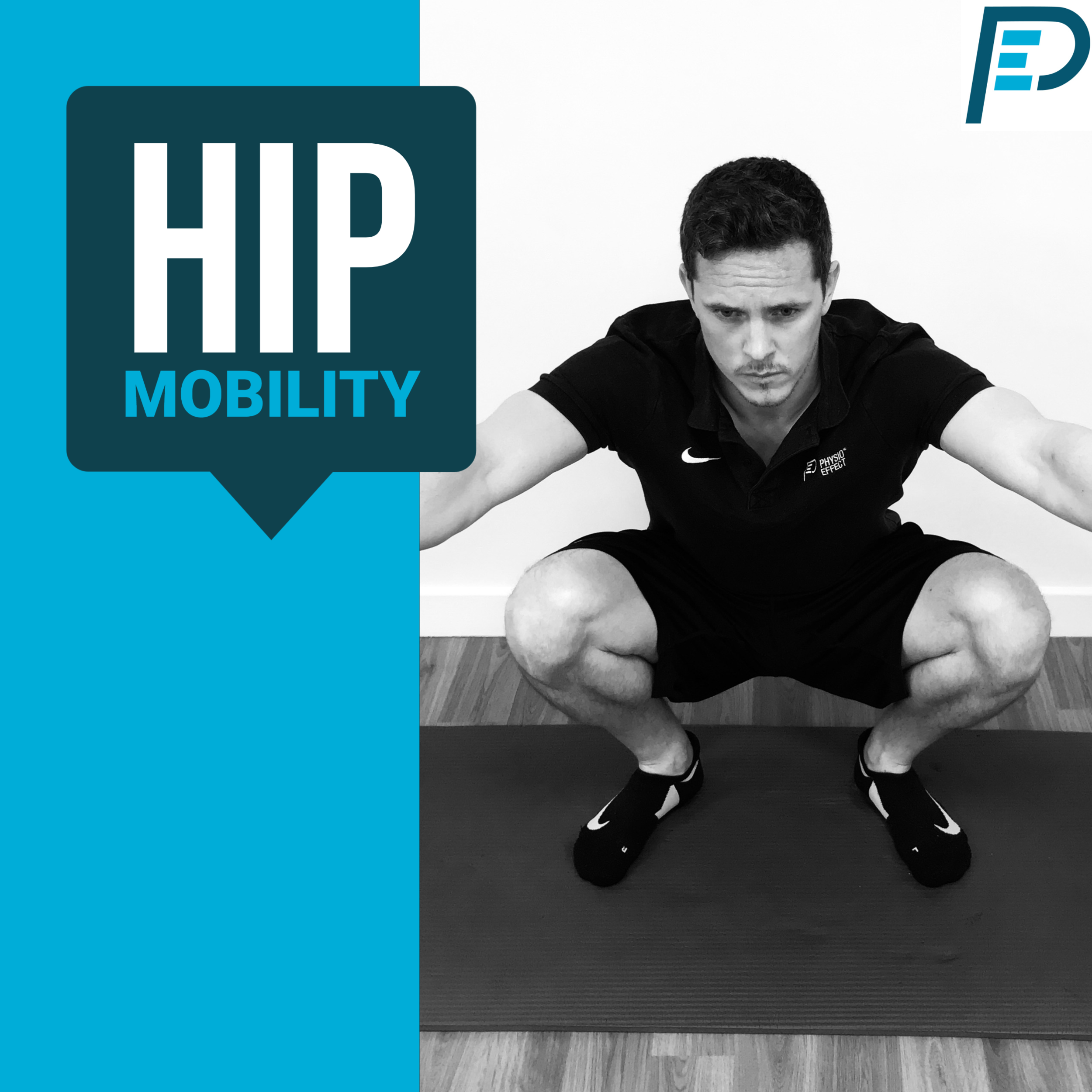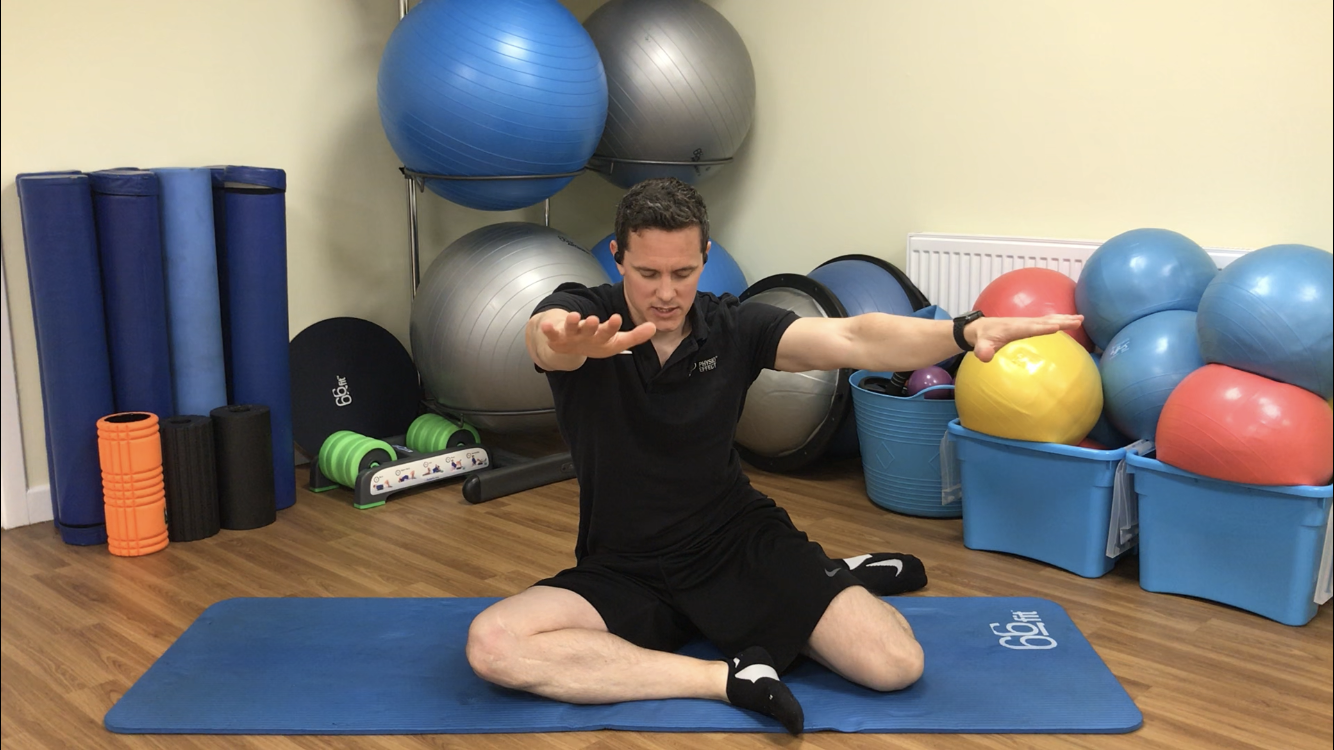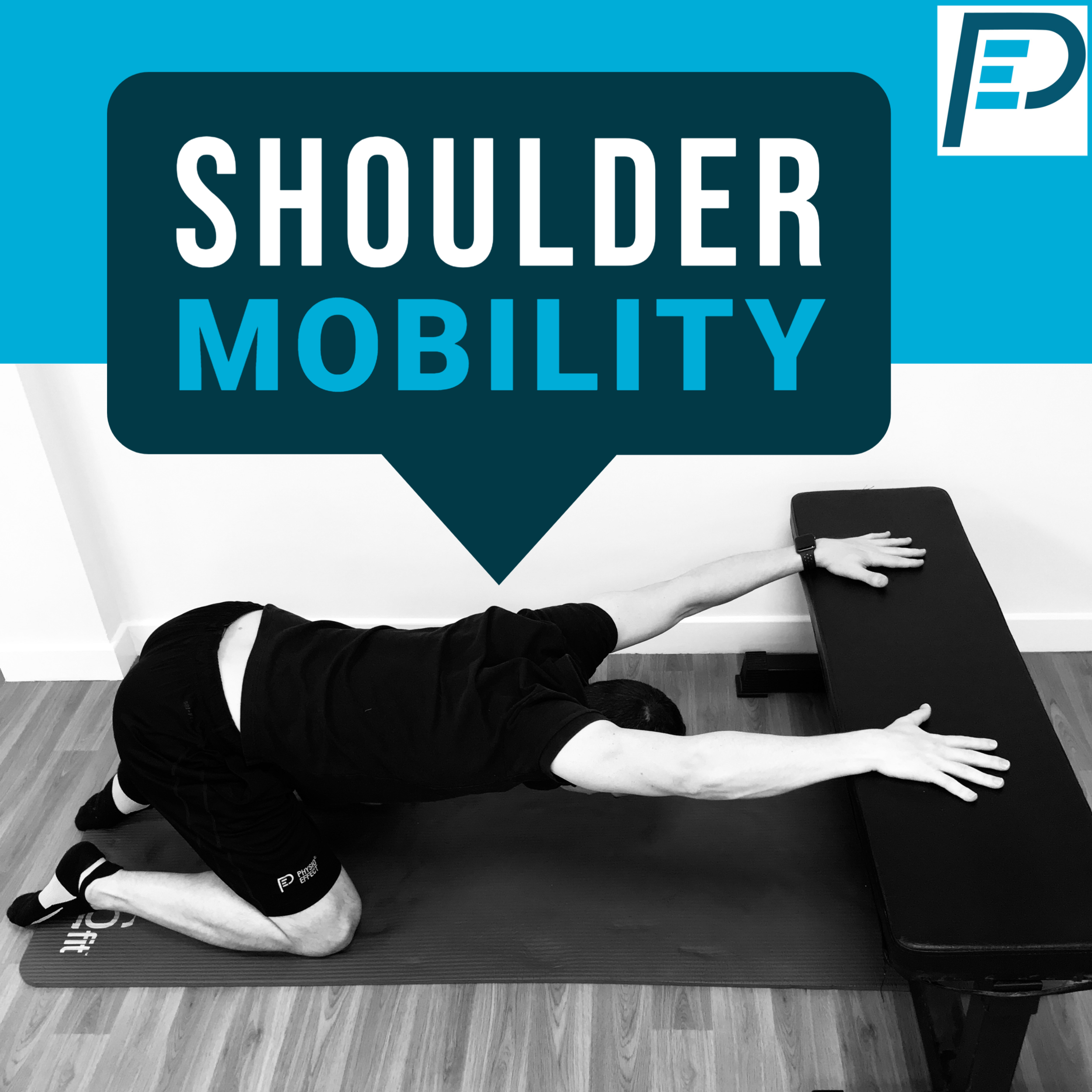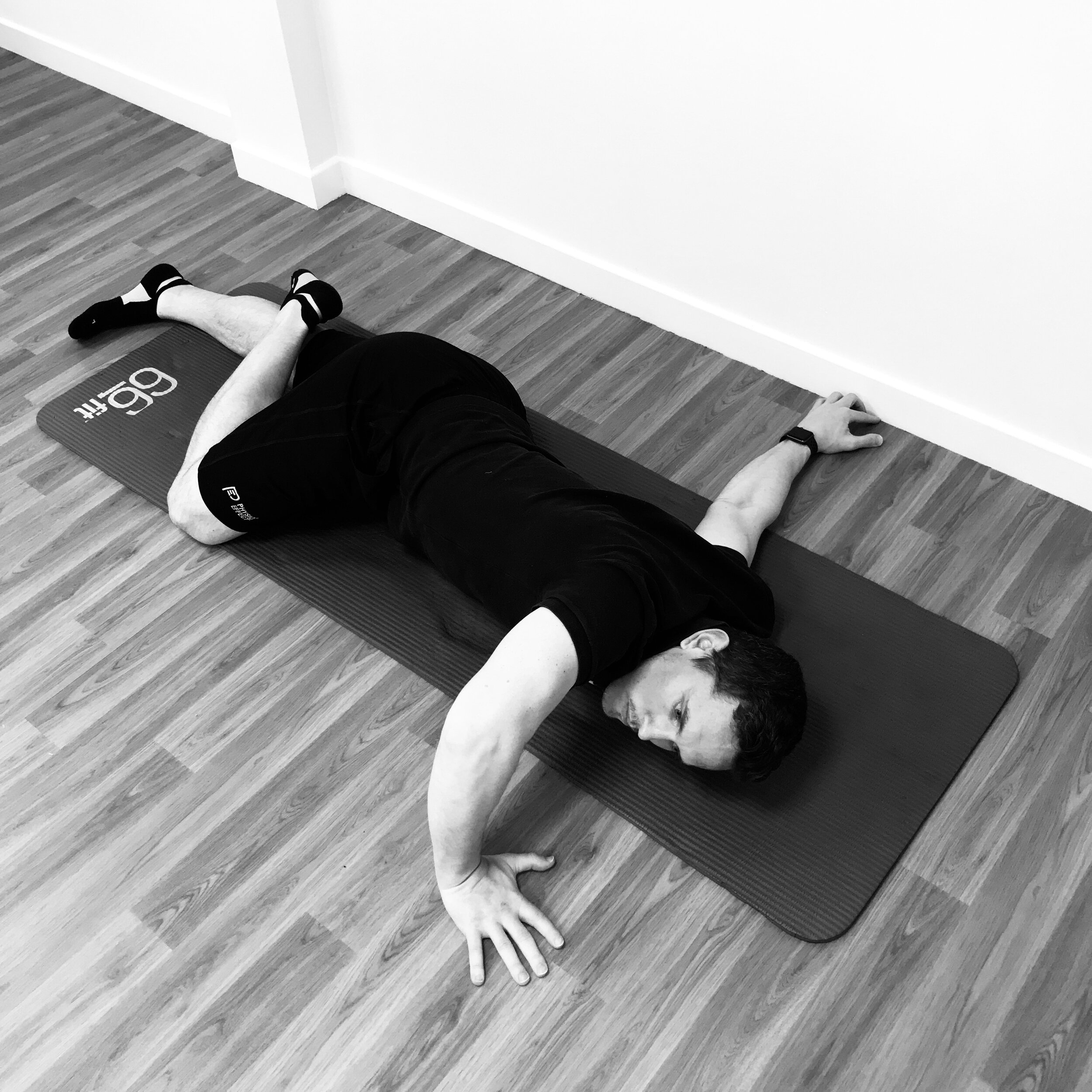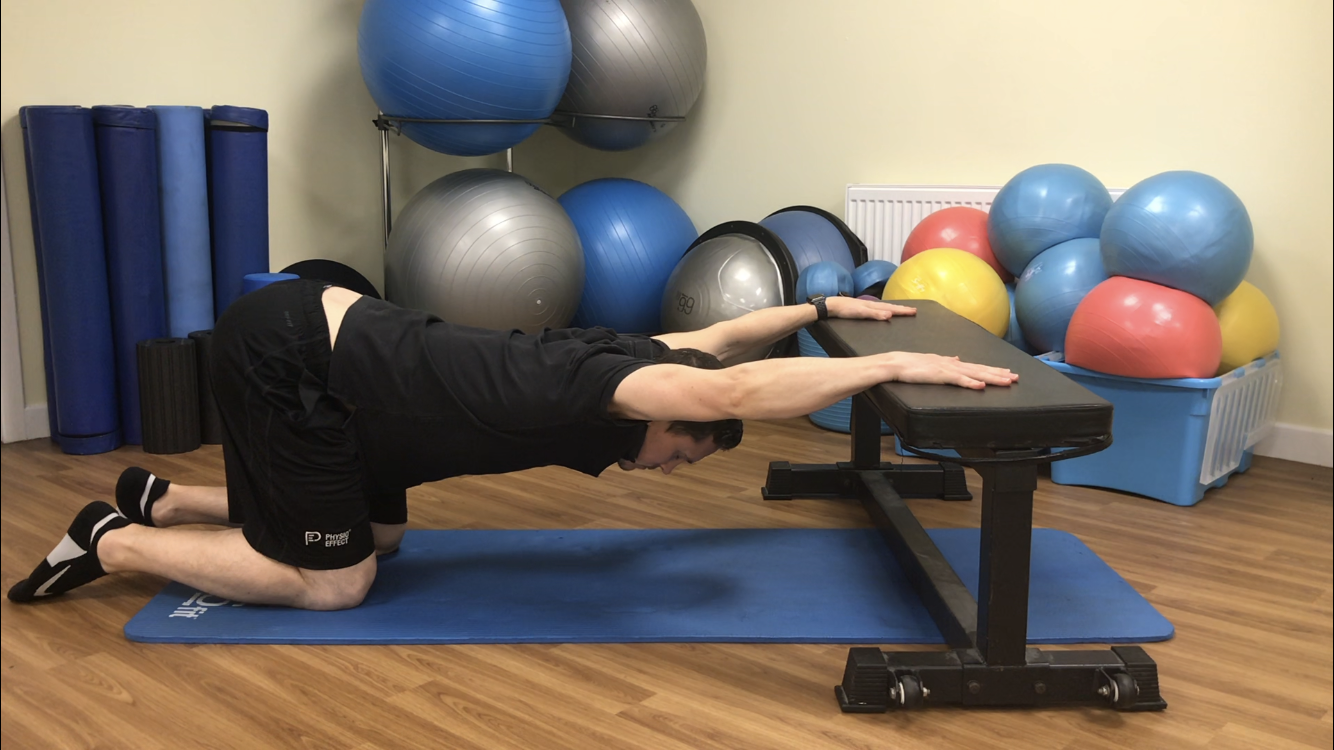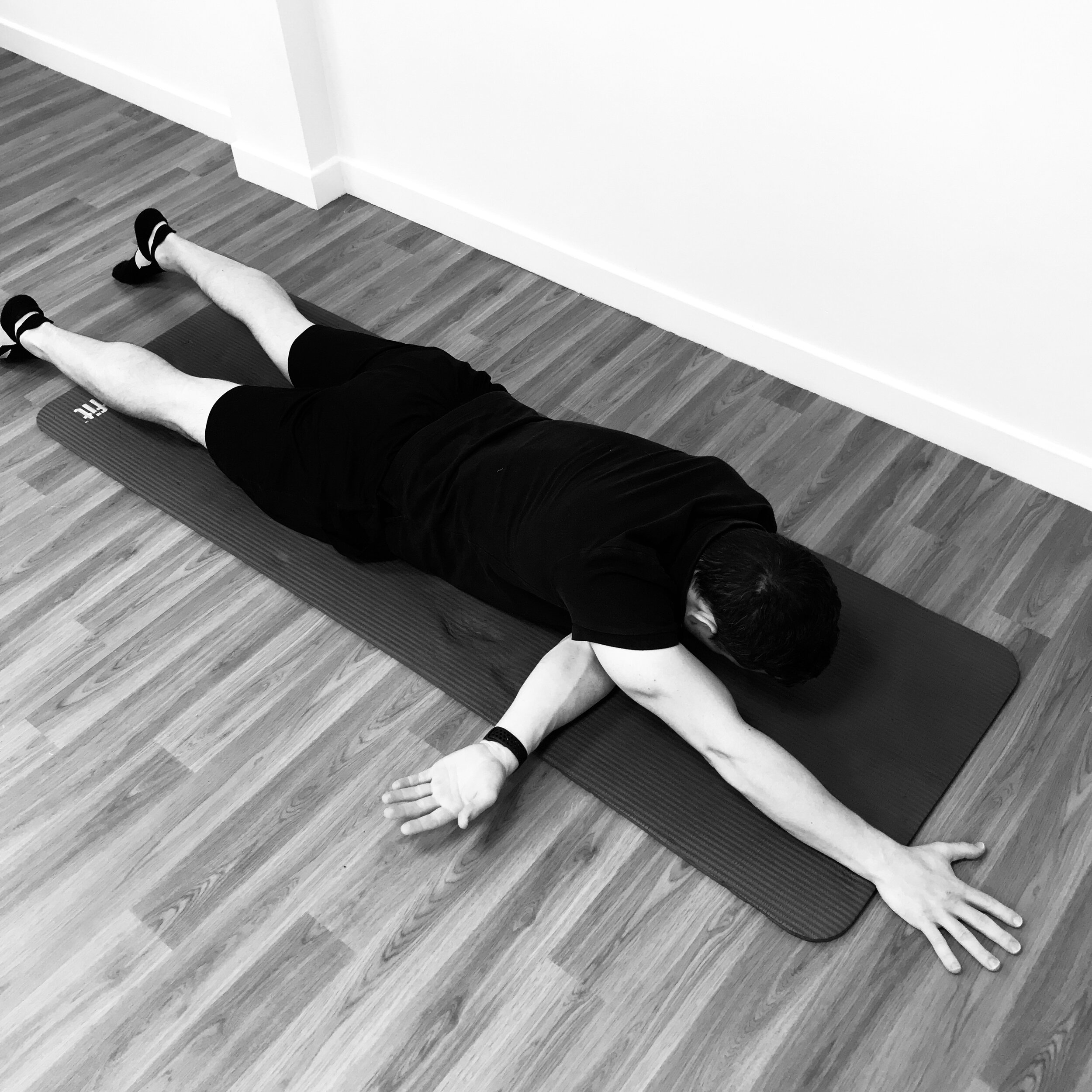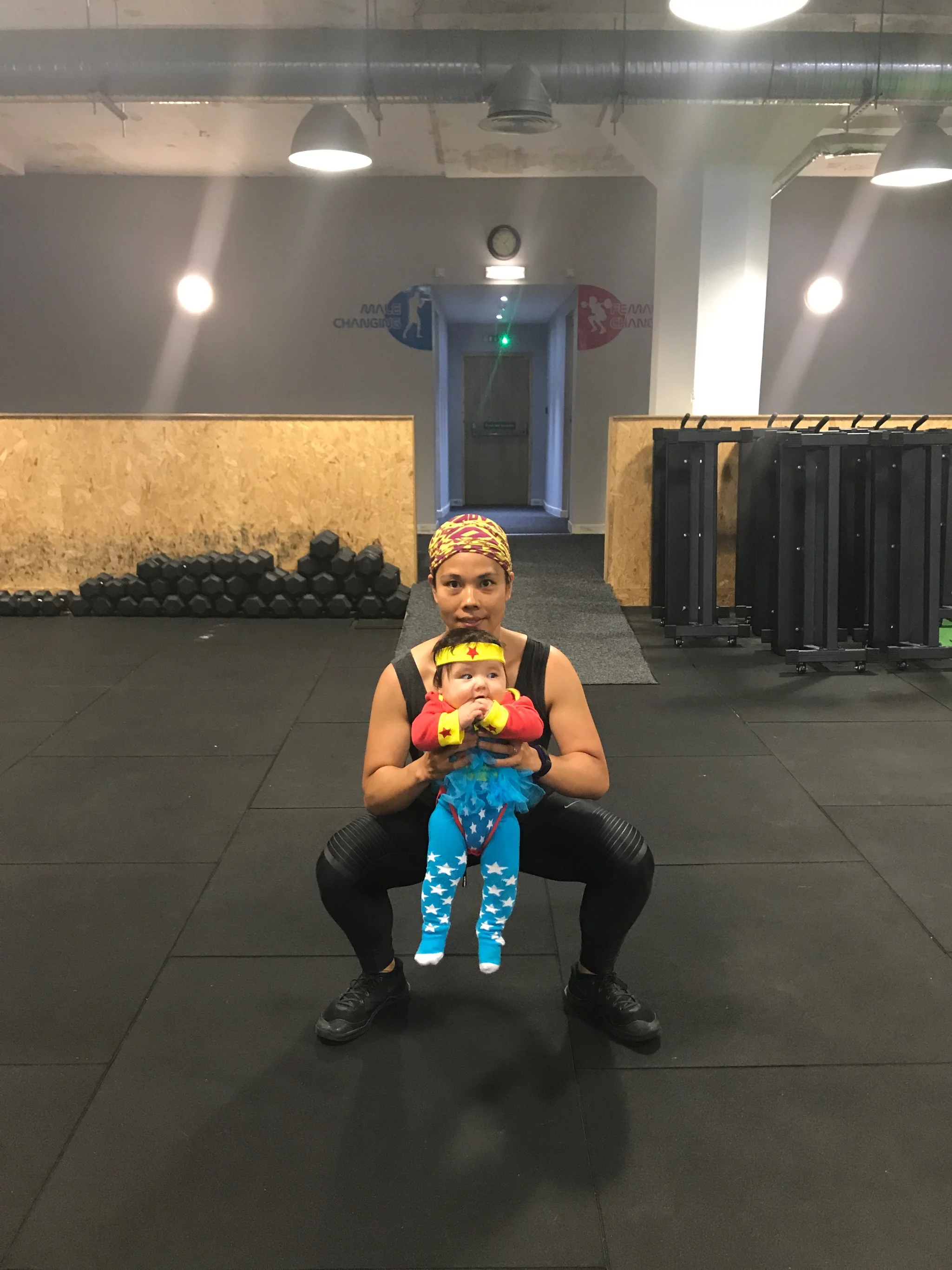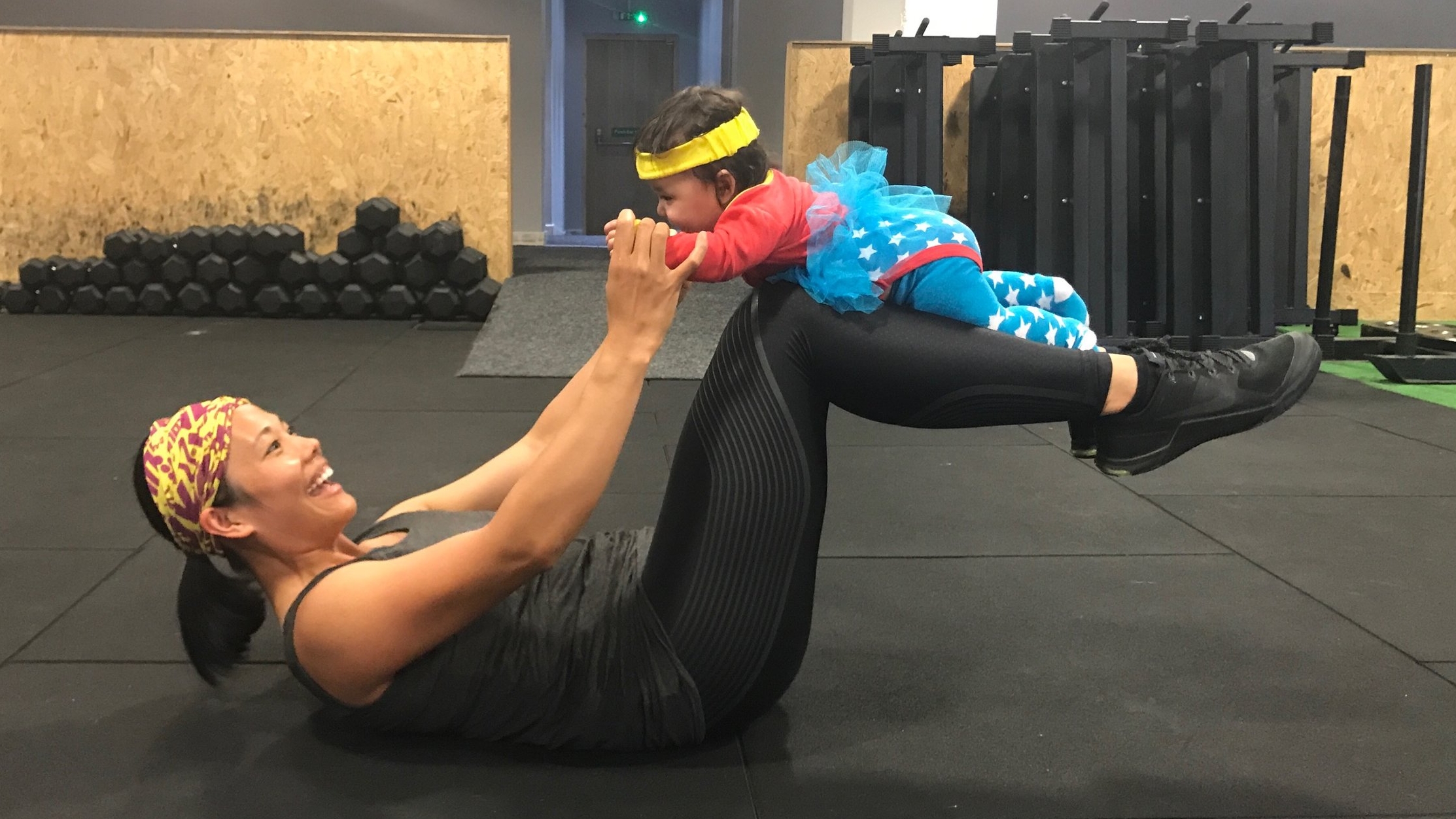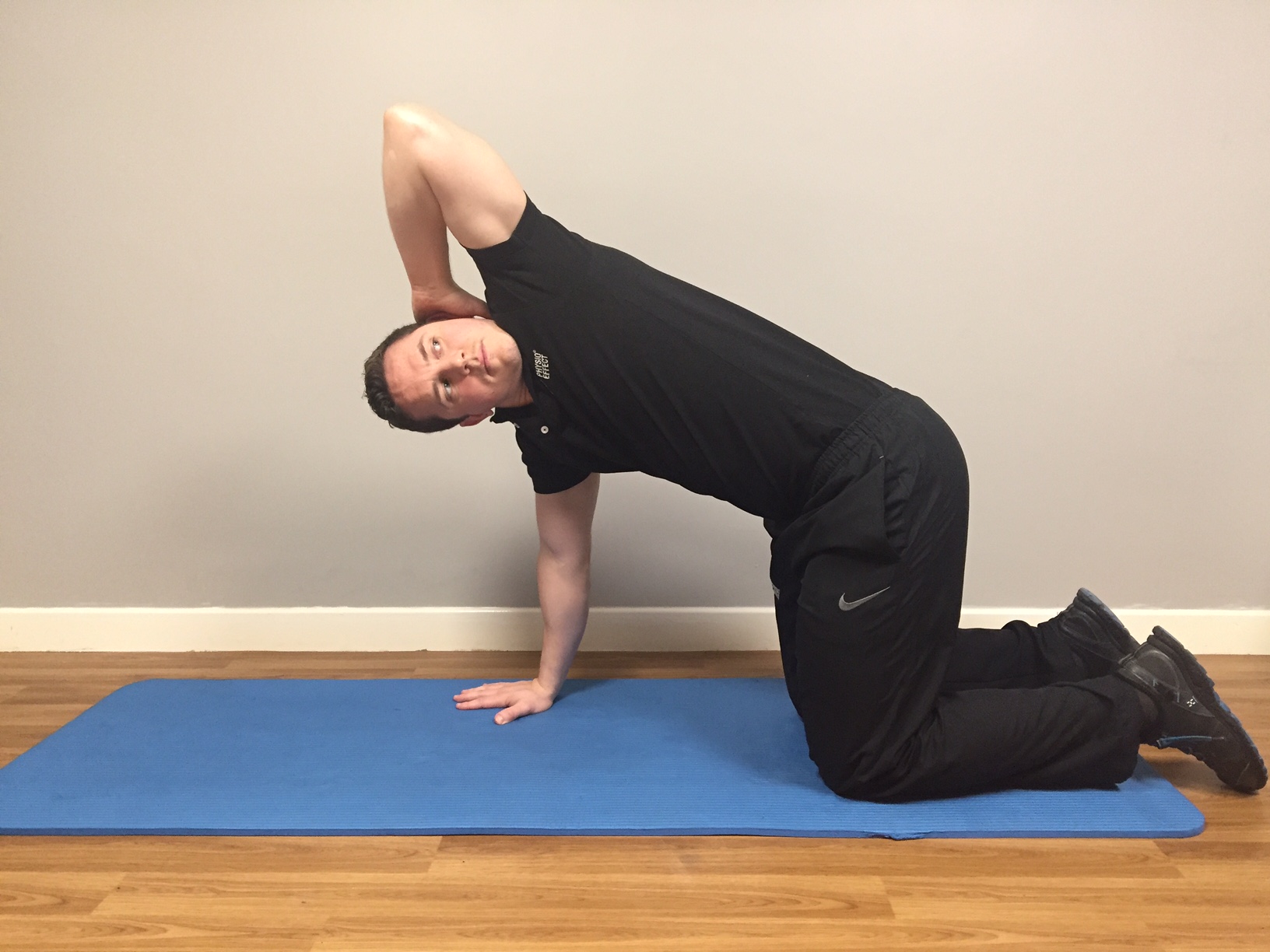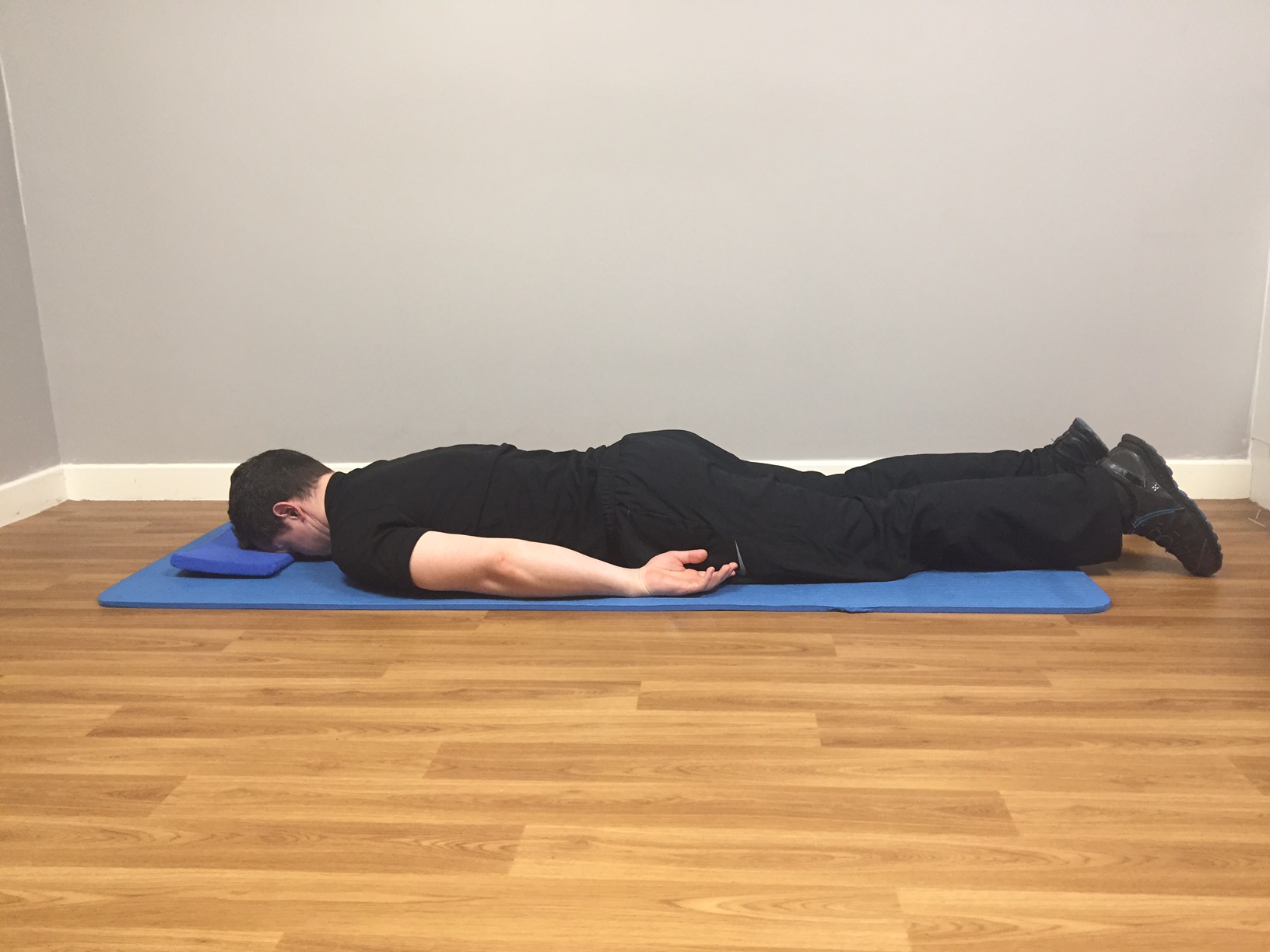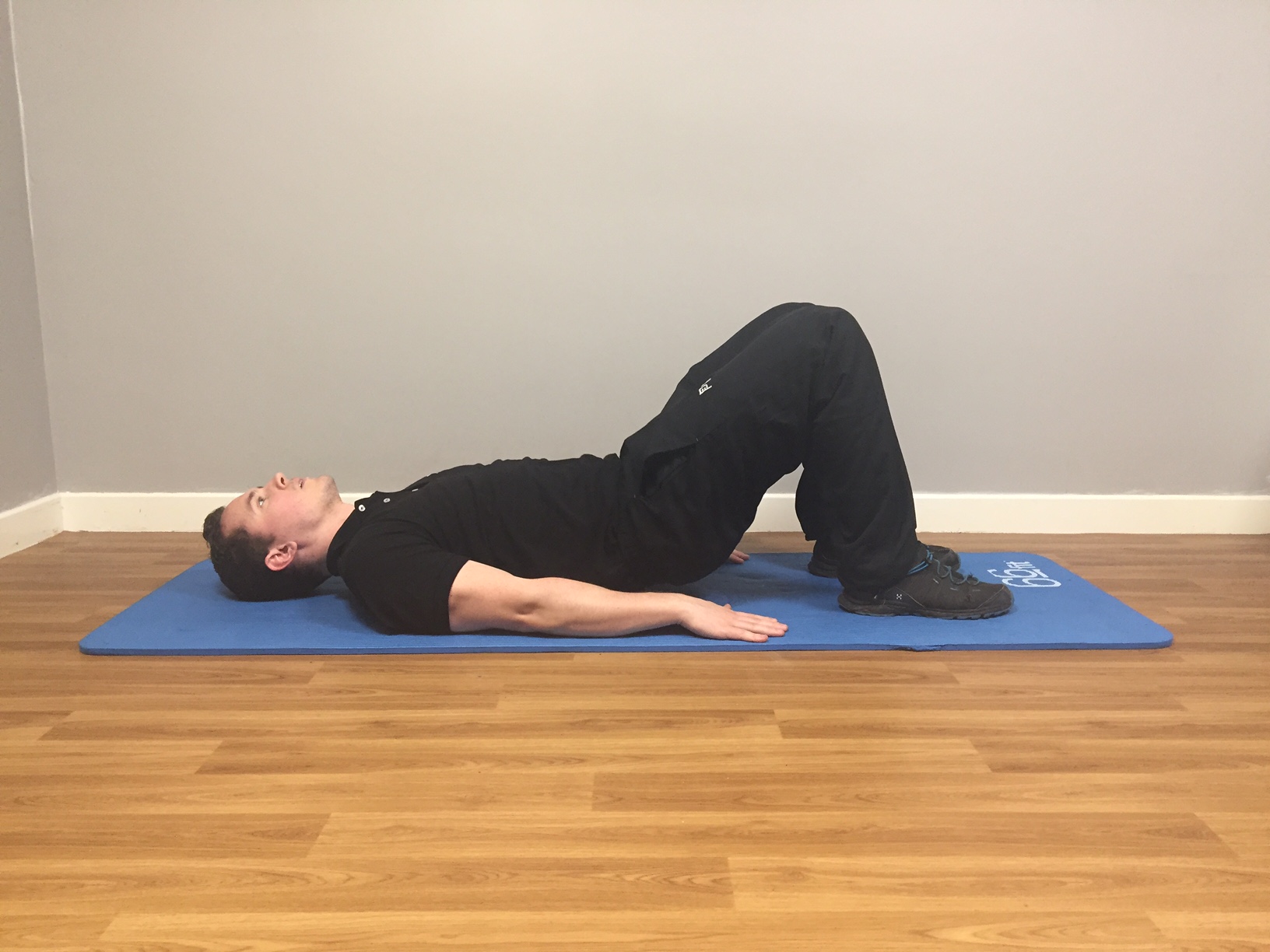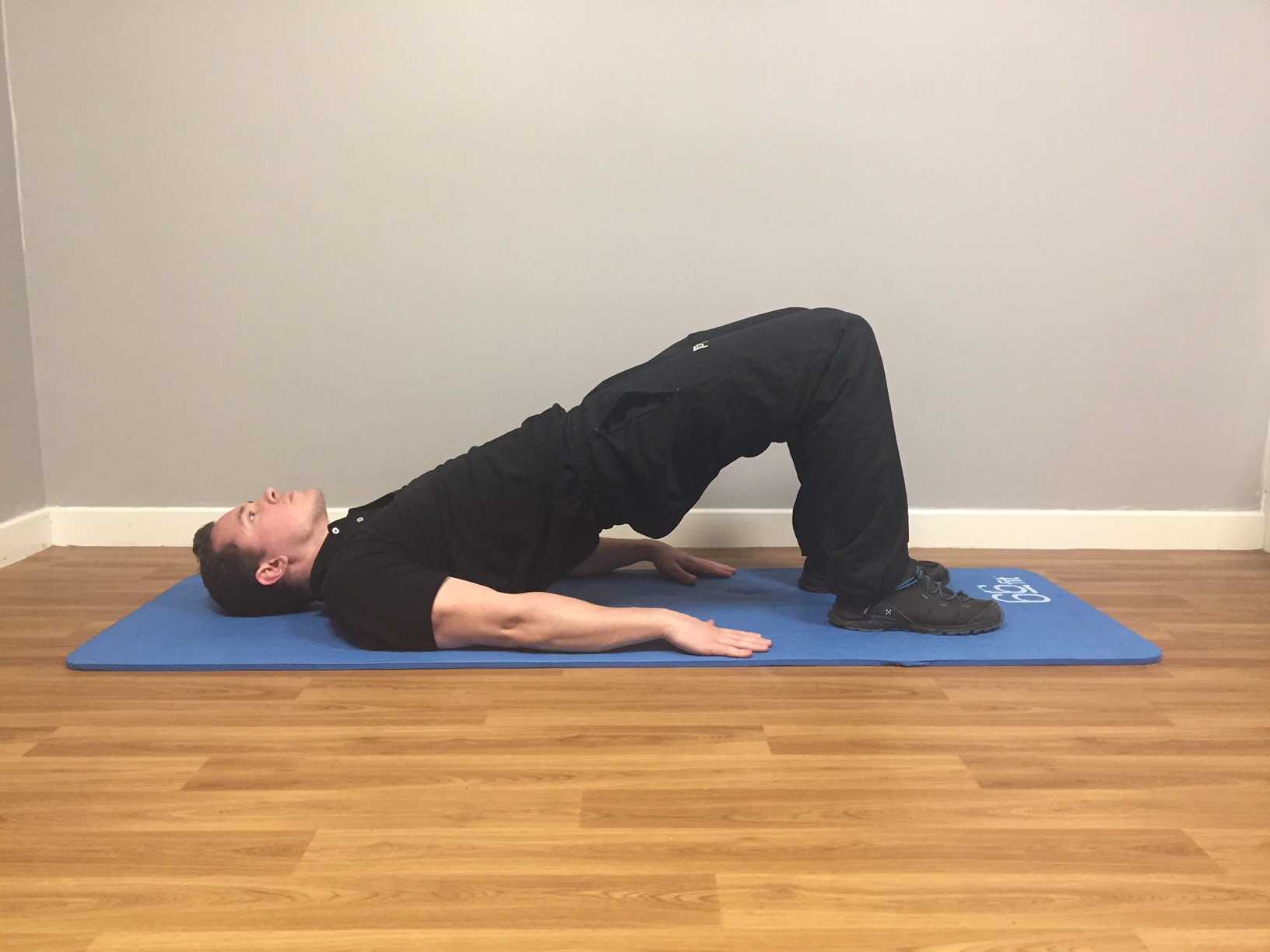Animal flows - What, How and Why?
Animal flows are a great addition to any exercise plan, warm up routine or injury prevention plan. Learning to move like a monkey, frog, or bear helps to build full body strength, mobility and motor control which in turn will make you a more awesome human and less prone to injury. This blog with video tutorials will explain what these movements are, how to utilise them and why you should should be doing them
What are Animal Flows?
Animal flows essentially refer to movement and exercise patterns where we imitate different types of animals such as bears, monkeys, frogs or lizards. Moving in these patterns can be very challenging, especially for the stiff & inflexible among us, but can also be really fun & provide significant benefits.
Deep Squat
Practicing animal flows can help improve strength, flexibility, mobility and overall motor control which in turn will help to make you a better functioning human and less at risk of injury. These movements can really challenge us in unconventional ways demanding our joints and muscles learn to control movement in patterns and ranges we would rarely otherwise practice. They can provide a great way to warm the body up in preparation for other forms of exercise or can even act as a stand alone training session. Once you have tried some of these movements for a few minutes you will understand why!
Where do I start?
As with all areas of training and exercise when attempting something new or different our advice is always start slow and work safely within your own levels of capability. Never push through pain or injury and if in doubt about whether this is appropriate for you please seek advice from a qualified professional.
Very few people will be able to perform controlled animal flow movements perfectly or even well at the beginning. When incorporating these kinds of exercises with my patients it’s essential we first establish their base level where they feel safe to practice but also feel that it is challenging. I would advise starting with getting comfortable in the static positions required as the foundation for the movement. In this post we will look at 2 positions - Deep Squat & A-Frame (Downward dog). These are the foundation starting postures for progression onto the animal movements monkey, frog and bear.
Deep Squat
The squat is a great foundation exercise for strength and mobility in the lower limbs and yet for so many people it is a real area of weakness and frustration. A lot of us slowly lose our ability to sit into a deep squat mainly through neglect and lack of practice combined with our static and sedentary western lifestyles. We become weak, stiff and tight and can no longer control the range of motion required to allow a deep squat. We rarely challenge ourselves to sit into a deep squat position let alone spend time exploring and improving on our range and control in this position. So first things first lets get a measure of your baseline squat function - check out this video and see how you get on.
It may take weeks or months of work to improve your squat mobility and that’s okay. For a more detailed look at improving your hip and back mobility please click the links to see our previous blog posts on these areas. You can use these routines alongside your deep squat holds to improve your squat function.
If you feel up to increasing the mobility challenge of your deep squat lets check out this next video requiring some active hip rotation movements at the bottom of the squat - a great way to improve your range of motion and strength.
I would recommend slowly building these exercises into your routines, aim for 20-30 second rounds initially performed for 3-4 sets thereby accumulating 2-3 minutes in the deep squat. Try this at least 2-3 times per week. Long term the idea is to become comfortable spending longer periods in the deep squat and find it relatively easy to perform movements from this position. Try to build up to 5 minutes total in the deep squat per day of practice over several weeks.
Monkey & Frog Mobility
These animal flow progressions are suitable once you have a comfortable squat allowing you to sit at least to parallel depth without the need of hand support. Don’t worry if you’re not there yet, keep practicing the squat, back and hip mobility exercises and you can move on to these once you feel confident.
These exercises are difficult and physically demanding but the pay off of regular practice will be improved squat mobility, increased lower limb strength and motor control with an associated reduced injury risk in these areas. Give each of these a try and see how you get on.
Add these to your regular practice at least 2-3 times per week initially
Begin with 20-30 second rounds aiming to build up to 1-2 minutes or longer
Look to accumulate time in the positions - Try a 5 minute timer & while stopping for breaks when required, try to spend as much time actively moving in these flows
Ideally we want to develop a relaxed freedom of movement where you can drop comfortably into a deep squat and easily move through monkey and frog patterns. You can mix and match the movements to create variation in the flow and challenge your strength and mobility through mixed planes of movement. Don’t expect overnight success but as with all training with hard work and consistent practice you should be able to improve allowing you to move better and feel better.
A-Frame (Downward Dog)
This stretch position is probably best known in yoga circles, most people will of at least heard of the Downward Dog. Another term we will use is A-Frame which refers literally to the fact we are trying to get our body into a position whereby it looks the a capital letter ‘A’. This position is another staple in many exercise forms and for good reason, it challenges the flexibility and strength of our body in many areas. The shoulders, back, hips, knees and ankle joints will be tested and for many people deficiencies in strength and range of movement will limit the quality and range available in attempting this position.
For many of us just attempting this posture will be tough and tiring. A lot of you will be feeling significant resistance in the backs of the legs (hamstrings and calves) and through the shoulders and upper back. Build slowly and increase the time spent in the stretch as you feel able, again looking to improve on your own current baseline level. Before attempting bear movements from this position we can work on a couple of simple variations which are shown in the video - slow marching on the spot and active shoulder extension pushing the head and shoulders through. Let’s give it a try and see how you get on.
Bear Movement Flows
The bear crawl can be utilised as a full body exercise to develop strength, flexibility and control in many areas. It is challenging and will take time to develop the skill and movement control required to perform it well but as with all these exercises your only goal should be to steadily improve on your own current baseline level. Once you have developed some comfort and control with the A-Frame stretch the first Bear Crawl movement we will try is with straight arms and straight legs as demonstrated in the video below. The key here is control so take your time and just do what you can, even if it’s only a few seconds initially, you can build on that. Let’s give it a go.
In the next video we demonstrate a number of bear crawl variations to give you some more options to explore. Depending on your own levels of mobility and strength you may find some options easier and others harder but it is great to play around and explore a variety of positions to find any weaknesses or restrictions and ensure a variety of stimulus is achieved. The key is to safely work on your own issues and don’t be afraid to explore positions that are challenging as long as you do so gradually.
Add these to your regular practice at least 2-3 times per week initially
Try:
Straight arms & legs
Bent arms, straight legs
Bent arms, bent legs
Straight arms, bent legs
Begin with 20-30 second rounds aiming to build up to 1-2 minutes or longer
Move forwards, backwards and sideways
Look to accumulate time in the positions - Try a 5 minute timer & while stopping for breaks when required, try to spend as much time actively moving in these flows
Summary
In summary adding animal flow movement practice into your regular exercise routines or habits can have significant physical benefits by helping to improve full body strength, mobility and motor control. It is a challenging but fun way to mix up your normal exercise routines and pushes your body to explore a variety of joint postures and positions that are not routinely trained or strengthened. This variety of stimulus will help to ensure strong and healthy muscle and joint function. Enjoy exploring and playing with these movements and ultimately you can learn to move better & feel better.
Thank You
Thanks for taking the time to read this guide, we hope you find it useful. Please share with anyone who might benefit and if you have any questions comment and let us know. Please subscribe to our mailing list to receive more interesting and useful blogs. Good luck and remember to move better & feel better
Stiff achy hips? Tightness or weakness and what can you do about it?
Complete hip mobility routine to increase range of motion, reduce pain and improve function. Explore your own limitations and work to improve them with daily practice of this routine. Rid yourself of stiff achy hips and restore strong, healthy movement while improving athletic ability.
Why are my hips sore?
Deep Squat
Chances are if you’re reading this you have at least one hip and at some point it has given you trouble. Hip pain or stiffness has likely gotten in the way of your daily activities or restricted your ability to exercise on more than a few occasions. Our hips are at the centre of our body’s movement, so if they are functioning poorly then our ability to move freely and unrestricted will be compromised. Poor hip function can cause local issues around the hip but often contributes to pain and dysfunction in other areas like the lower back and knees.
The primary reason for developing hip pain for most people is a lack of movement and excessive sedentary behaviour, an all too common theme in our modern lives. You may workout regularly but chances are you still accumulate a lot of static postures through work or leisure and it’s unlikely that your exercise habits routinely explore and work the hip joints and muscles to anywhere near their full range or capacity. Though most hip pain is not serious and can be helped with the right exercise, we recommend consulting a health professional if you are worried or have persistent symptoms.
Modified Pigeon with Active Hip Internal Rotation
Am I Stiff or Weak?
Most likely it’s a combination of both. There is a lot of confusion out there around the terminology of flexibility, mobility and strength. Essentially flexibility can be considered passive and is about the soft tissues (muscles, tendons and ligaments) ability to temporarily elongate to allow movement through a range while mobility centers around our ability to move through a range of motion with control before becoming restricted. Mobility requires strength to control your flexibility.
Take for example someone who can squat 200 kilos to a parallel depth. This would obviously be considered strong in that range. However if the same individual cannot perform a body-weight squat below parallel depth without falling over or requiring support then we could say they have poor squat mobility. Passively if they can still achieve a deep squat position using some support we can say that they have reasonable flexibility in their soft tissues to allow this. Ideally this individual will work to improve their mobility so that they have better strength to control a greater degree of flexibility i.e they can drop comfortably and controlled into a deep body weight squat without assistance.
Should I Stretch or Strengthen
Again for most people the answer here is both but the key is identifying exercises that allow you to improve on both simultaneously whilst also offering functional value. Being inflexible is not great as your natural joint range of motion may be restricted and eventually painful. Inflexibility can lead to struggles with basic everyday activities like bending to pick something up or getting in and out of bed or your car. If you are weak then as discussed before you will not be able to control your flexibility or movement again making you more vulnerable to injury and pain.
This is where we need to be smart and specific in identifying our own needs and training with functional goals and targets in mind. You may have great flexibility and touching your toes is a breeze but when asked to do a basic lunge you lack the strength, balance and co-ordination. Conversely as with our example above you may have great strength for lifting weight but only in a limited range and the idea of touching your toes or sitting in a deep squat seems ridiculous. There is no single one recipe to fix all here but in essence mobility training will work both our strength and flexibility needs, we just need to identify the right exercises.
Try this mobility routine we have created to help identify your own personal problem areas. What to you find most difficult and are you struggling due to tightness, weakness or a combination of both?
Up for a challenge? Try this routine a few times and note the 3 exercises or positions which you find most restricted or difficult to perform. Now practice them consistently at lease 3 times per week for the next 4-6 weeks and see what changes and improvements you can achieve
At the bottom of this blog you can see each of the individual exercises that make up our hip mobility routine. Click the link below to download your FREE PDF copy of these exercises including some key tips .
Challenge to Change
For the vast majority of people our lives and even our exercise or training keep us moving in basic linear patterns (up and down). We don’t often (if ever) challenge our hips with lateral or rotational exercises and most people end up weak and unstable in these positions compromising their hip health and function. That’s why we designed these routines to explore and challenge these less common positions.
This next video demonstrates 3 more advanced hip mobility exercises that you can try. Please only attempt what you feel able and do not work into pain or through injury. Try the exercises in the video below and see how you feel. Chances are you will find this very tough but they are great exercises to improve overall hip mobility and function so if you feel able add them to your regular routine and with consistent practice you should see real improvements.
Exercise 1
Seated hip Internal / External Rotation
Begin in sitting leaning back on straight arms, knees and hips bent and relaxed shoulder width apart with feet flat on floor.
Gently and with control lower both legs to one side trying to touch the outside of one knee and inside of the other knee to the floor. Don’t worry if this range is too much, just work as far as you feel is challenging but comfortable. Return to start and repeat to opposite side.
Perform this movement for 60 seconds
1- Floor Sitting, Lean back on hands, high chest
2- Slowly Rotate Both Legs to one side
Exercise 2
Deep Squat Hip Internal / External Rotation (Advanced Option)
Begin in a deep squat. Ensure heels remain in contact with the floor
Slowly rotate one knee across mid-line aiming to touch knee to floor in front of opposite foot which should remain flat with heel on floor. Allow moving leg to rotate up onto toes. Static leg should remain open and avoid any inward collapse of knee/hip position.
Return leg to starting deep squat position and repeat with opposite leg.
Repeat with alternate legs for 60 seconds
1- Deep Squat, Heels on floor
2- Deep Squat- Active Hip Rotations
Exercise 3
Modified Pigeon
Begin in 90/90 hip and knee position. Gently rotate and square hips up facing forwards
Gently lean chest forwards through your hips and rotate slowly leaning over the forward knee
Option to gently contract front leg pushing knee into floor, hold 5-10 seconds and release. Repeat 5-10 times.
Work into and explore stretch for at least 60 seconds
1- Modified Pigeon 90/90 Sitting
2- Modified Pigeon- forward lean & rotate over front knee
Exercise 4
Modified Pigeon Active Hip Internal Rotation Lift
Begin in the modified pigeon 90/90 sit with slight forward lean supporting weight on hands
Gently lift back foot off the floor. Squeeze and hold for 5 seconds. Repeat for at least 5 contractions
You will repeat this exercise for the opposite side once you’ve completed the routine on one side
1- Modified Pigeon Forward Lean on Hands
2- Modified Pigeon Active Hip Internal Rotation
Exercise 5
Modified Pigeon Hip Active External Rotation
Begin in the modified pigeon 90/90 sit with torso rotated facing forward leaning weight back with hands behind you
Gently lift the knee (with inside touching floor) & rotate outward through hip. Squeeze and hold for 5 seconds. Repeat for at least 5 contractions. Ensure opposite leg remains still with outside knee resting on floor
You will repeat this exercise for the opposite side once you’ve completed the routine on one side
1- Modified Pigeon Chest Open
2- Modified Pigeon Active Hip External Rotation
Exercise 6
90/90 Sitting Lift to High Kneeling
Begin in approximate 90/90 sitting as shown, use hands to maintain balance without leaning on floor
Gently lift through the hips into controlled high kneel. Squeeze the buttocks and hold for a few seconds. Return to start position and repeat 30-60 seconds
Switch legs so back leg begins as forward leg and vice versa. Repeat active sitting movement 30-60 seconds.
1 - 90/90 Sitting on floor (no hand support)
2 - High Kneeling
Exercise 7
Frogger
Begin in all 4s, forearms on floor. Walk knees open keeping insteps of feet and inside shins rotated inward in contact with floor
Gently rock back through hips/pelvis as if taking bum closer to heels, squeeze knees into the floor and hold/release for 5-10 second repetitions.
Gently work into and explore stretch for at least 60 seconds
1 - Frogger Start Position
2 - Frogger Rock Back Position
Exercise 8
Deep Lunge Hip Opener with Arm Rotations
Begin in lunge position, extend out back leg as far as is comfortable. Lean forward and try to come to rest on forearms. Actively drive open front knee/hip rotating out onto outside border of foot.
Take inside arm next to front leg and rotate upwards to ceiling with a straight arm. Stretch open through shoulder, chest and spine. Hold for 5 seconds at top position, return to start driving elbow back to the floor and repeat for 10 repetitions.
Switch legs front to back and vice versa. Repeat process.
1 - Deep Lunge, Forearms to floor, drive front knee open
2 - Deep Lunge Arm Rotations
Thank You
Thanks for taking the time to read this guide, we hope you find it useful. Please share with anyone else who might benefit and if you have any questions comment and let us know. Don’t forget to download your free hip mobility cheatsheet. Good luck and enjoy your improved hip health.
Deep Lunge with Arm Rotation
Tight shoulders? This routine will fix you up
5 step shoulder stretch routine to relieve stiffness and tension. Discover a new range of motion and rid yourself of nagging tightness in your shoulders and upper back
Why are my shoulders so tight?
Familiar Hunchback Posture?
Shoulders are a big sticking point for many of us. We constantly assess and help people with long histories of stiff, tight, achy shoulders and upper backs. More often than not there is no significant injury history but very commonly there is a base of sedentary behaviour, such as office work and driving, and a significant lack of any structured stretching or mobility exercise. Welcome to our modern lives!
Most shoulder pain can be fixed without the need for invasive surgery but it can take time to undo a lifetime of poor habits which have lead to soft tissue adaptations with weakness in some areas and tightness or stiffness in others.
1/2 Crucifix Chest Stretch
Shoulders are very mobile and we put them through a lot over our lifetime with an expectation they will be fine with no real consideration given to tuning or maintenance work. Tightness and pain can easily creep in and often presents initially as discomfort reaching overhead, pain opening a door, or a struggle to weight bear through our arms. This can develop to more constant nagging pain and stiffness and a reduced ability to perform daily tasks or enjoy physical exercise or activities.
Many people just put up with having a dodgy shoulder and accept it as a new norm but with the right guidance and exercises most situations can be at least significantly improved if not completely fixed. Like everything in life though you won’t get something for nothing and commitment to changes in habit and daily routines will be required. A balance of stretching and strengthening exercises is normally key and we have provided a great starting point here with our 5 point stretching routine.
Let’s get started!
We must bear in mind that every body is different as is each individuals unique history and circumstances so please use this routine as a guide to start improving your shoulder health and flexibility but do so carefully. Start slowly and gently and never push in to pain. Work to better your own range of motion but do not compare yourself to the video or anyone else. Practice daily and be patient but also persistent. If you can only do part of the movement or a modified / reduced range that is fine, just do what you can. Of course as with all advice please consult with a health professional if you have significant pain or loss of normal function.
Mobility Flow Video:
Exercise 1
Shoulder rolls / Scapular circles
Begin in all 4s position.Hands fixed under shoulders shrug shoulders to ears thenslide back and down and release. Then spread shoulder blades apart stretching across upper back, relax and allow shoulders and back to hollow.
Try to perform this as a slow circular rolling motion working in various directions
Perform this movement for 60 seconds
1- Shoulder shrug
2- Shoulder spread
Exercise 2
Elevated Arms to Partial Childs Pose / Prayer Stretch
Begin in all 4s position with arms straight out elevated on flat surface. Gently sit bottom back towards heels and let weight drop down between shoulder blades and through upper back
When in position try gently squeezing shoulders together and releasing and light pressing through the hands with slight twist/rotation movement
Try breathing in deeply and coming out of the stretch slightly then breathing out slowly and dropping deeper into stretch
Explore the stretch position with subtle movements and breathing for 60 seconds +
1- 4 point kneel arms elevated
2- Sit weight back and down between shoulders
Prayer Stretch (Option 2)
Perform stretch as above but move to have elbows resting on flat surface with arms positioned in ‘Prayer’ posture
Sit weight gently back and down relaxing between shoulder blades and across upper back. Try to let head bypass the bench (surface)
Try breathing in deeply and coming out of the stretch slightly then breathing out slowly and dropping deeper into stretch
Explore the stretch position with subtle movements and breathing for 60 seconds +
Prayer Stretch Start Posture
Prayer Stretch - Sit back position
Exercise 3
Shoulder Dislocates (Stick or Band)
Begin in high kneeling or standing - Holding a stick or band keep arms straight and core tight, slowly bring arms straight overhead and around down towards lower back. Allow shoulder blades to gently shrug then rotate and slide down as you circle arms overhead
Return to start point slowly ensuring not to over-arch through lower back
Repeat for 10-15 repetitions
1- Shoulder Dislocates - Stick (Overhead)
2- Shoulder Dislocates Stick (behind back)
Exercise 4
‘L’ Position Prone Shoulder Stretch
Begin lying on your front. Gently reach with shoulder to be stretched under and across your body at shoulder height with palm facing up. Allow other arm to stretch straight overhead forming an ‘L’ shape with your arms
Gently rotate into the stretch as if trying to square up shoulder blades increasing the pull/stretch felt in back of the shoulder reaching across body. Hold and release this motion for several repetitions
Work in this position for 60 seconds + on each arm
1- ‘L’ Position Shoulder Stretch Part 1
2- ‘L’ Position Shoulder Stretch Part 2
Exercise 5
1/2 Crucifix Chest Stretch
Start face down with side to be stretched arm extended fully out at shoulder height palm down. Opposite arm is bent at 90 degrees at elbow hand at shoulder height ready to push into stretch
Gently push with bent arm while rolling weight of legs over to create a strong opening stretch of the chest of the straight arm
Gently push in and out of the stretch holding for a few seconds then releasing and repeat
Explore this stretch for 60 seconds + on each arm
1- 1/2 Cucifix Start Posture
2- 1/2 Crucifix Chest Opening
Thanks for taking the time to read this guide, we hope you find it useful. Please share with anyone else who might benefit and if you have any questions comment and let us know. Don’t forget to download your free mobility cheatsheet. Good luck and enjoy your improved shoulder health.
‘L’ Position Prone Posterior Shoulder Stretch
Antenatal Exercise; What the Guidelines & Evidence Say by Raz Leonard
For over a year I’ve been enjoying teaching two Antenatal Pilates classes at Physio Effect and, from the start, the classes have been fully subscribed. Many of the women tend to come from Health Care professions themselves and know the benefits of exercising during pregnancy. I am always surprised at how many old wives’ tales are out there and how many women remain inactive or stop physical activity during this crucial time. I plan to summarise some recent evidence-based reviews on the topic so that the facts can be divided from fiction.
For over a year I’ve been enjoying teaching two Antenatal Pilates classes at Physio Effect and, from the start, the classes have been fully subscribed. Many of the women tend to come from Health Care professions themselves and know the benefits of exercising during pregnancy. I am always surprised at how many old wives’ tales are out there and how many women remain inactive or stop physical activity during this crucial time. I plan to summarise some recent evidence-based reviews on the topic so that the facts can be divided from fiction.
The evidence shows that exercising during pregnancy is completely safe and in fact improves the chance of a healthy baby and mum. There are some exceptions to each rule which is why it is important to check with your midwife/ health care practitioner first and exercise with someone trained to adapt a programme to you. More detail of this evidence is presented below.
The first publication I wanted to share is by the UK Chief Medical Officers (2019) and based on best available evidence. The infographic summarises the key points however you can access the full report via this link.
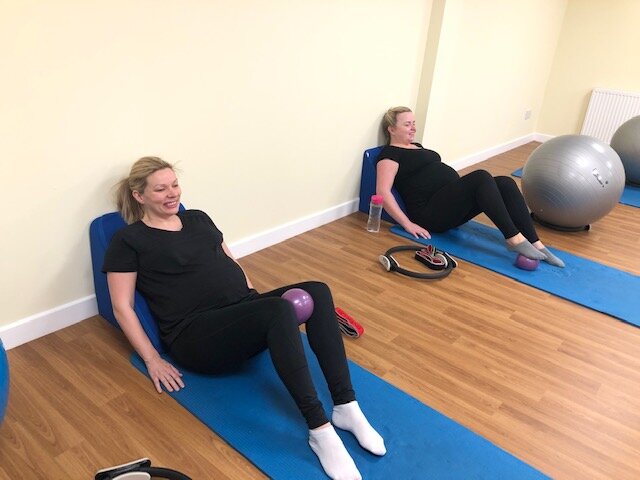
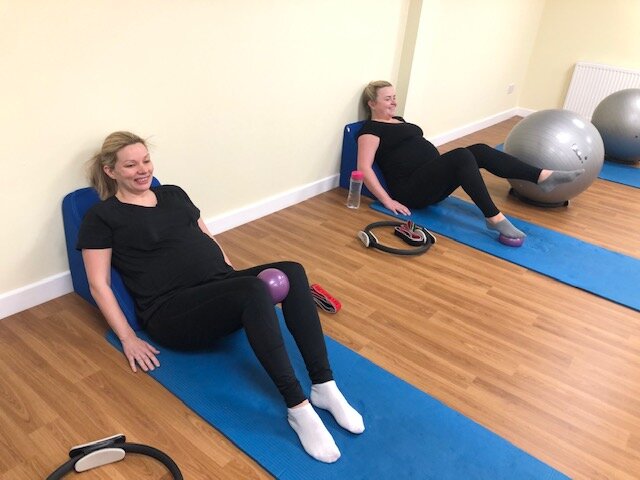
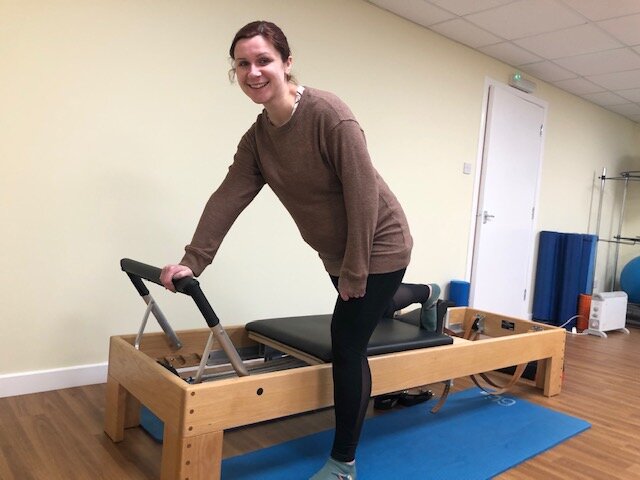
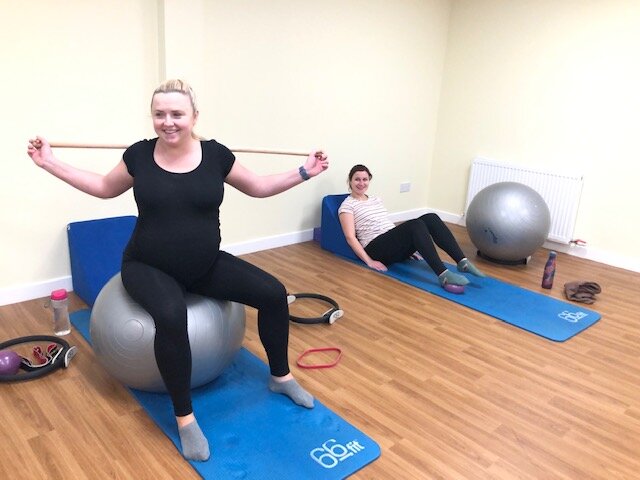
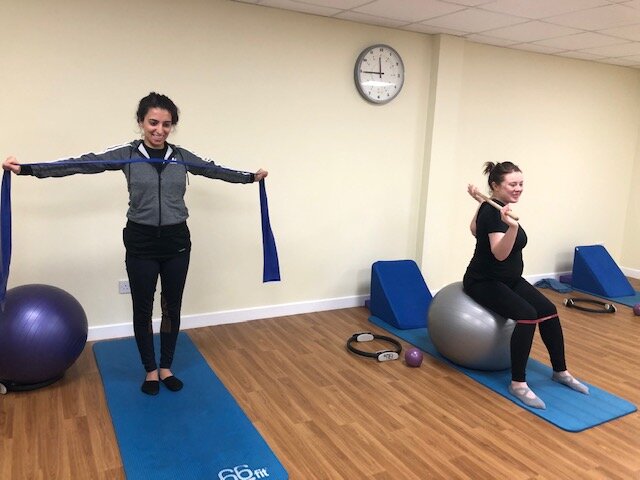
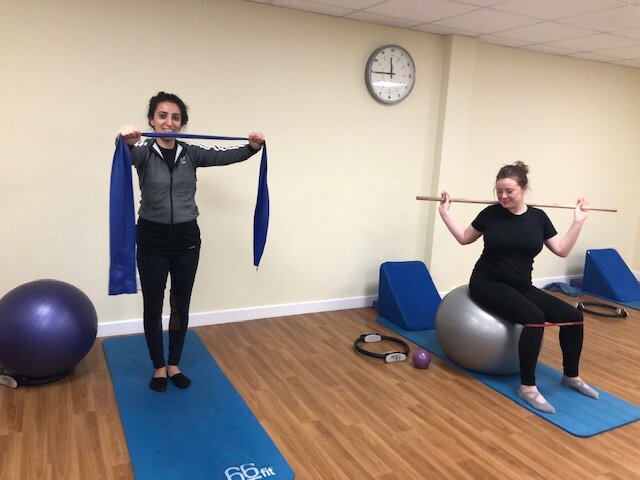
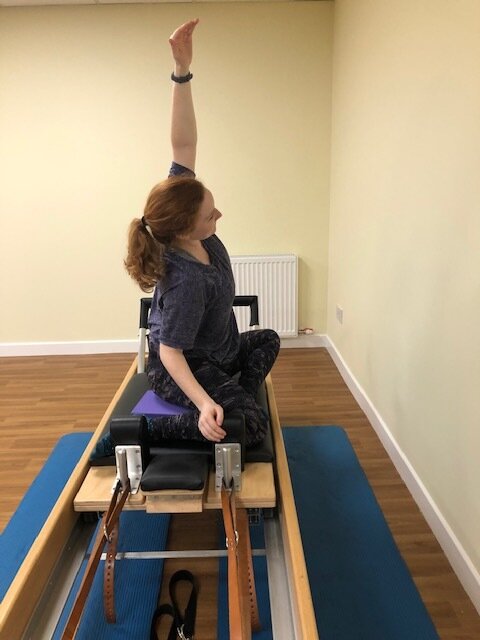
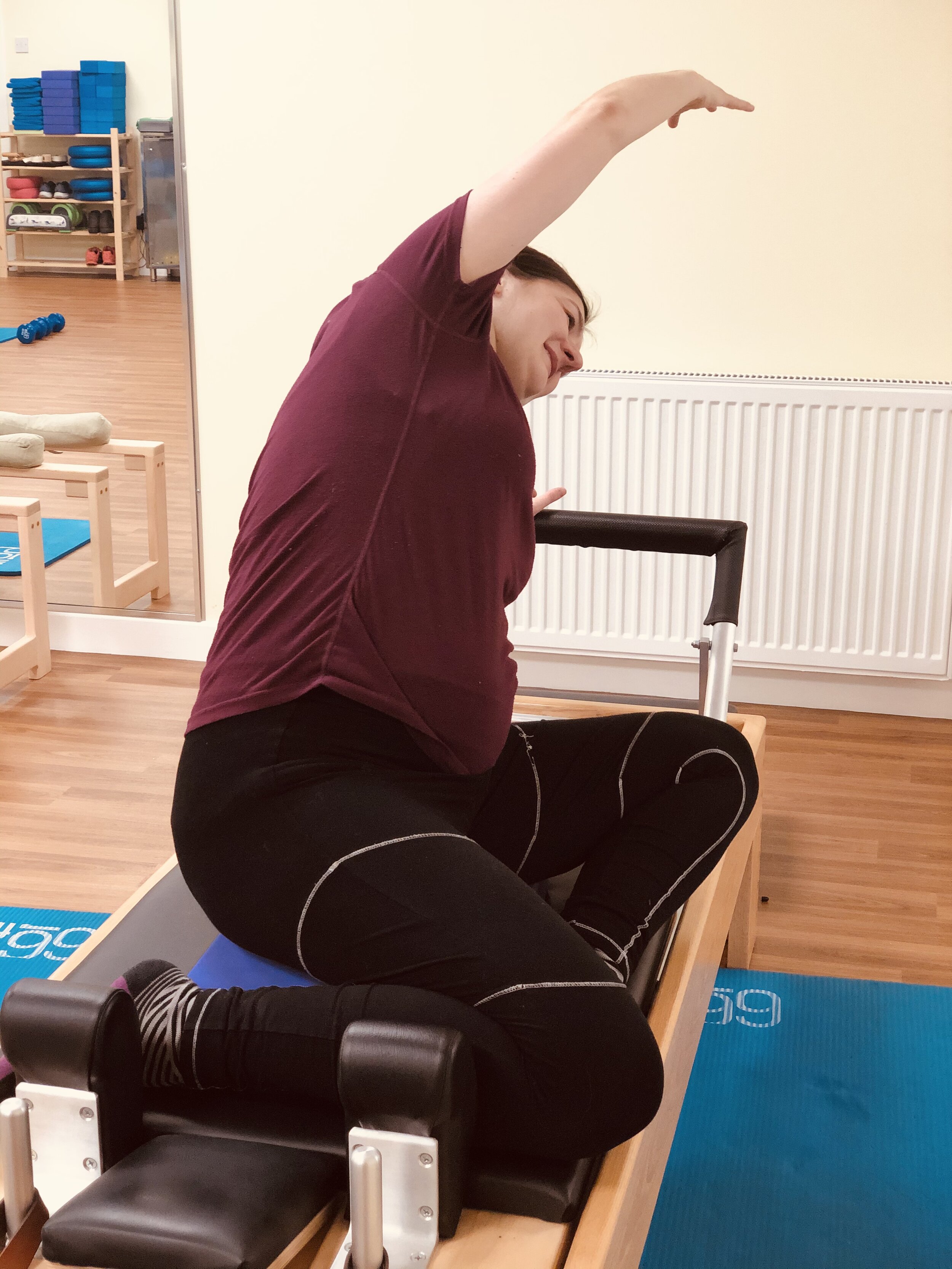
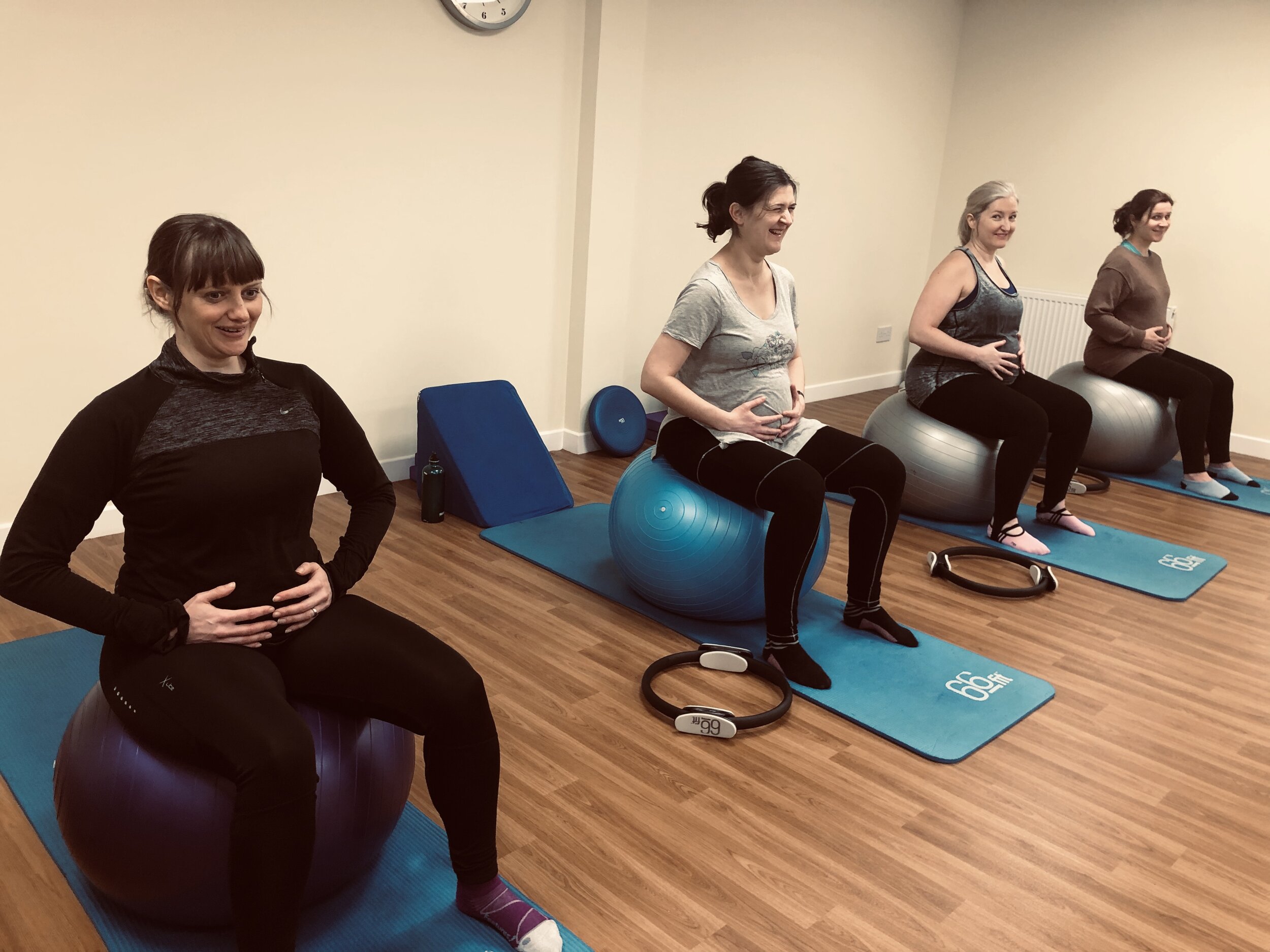
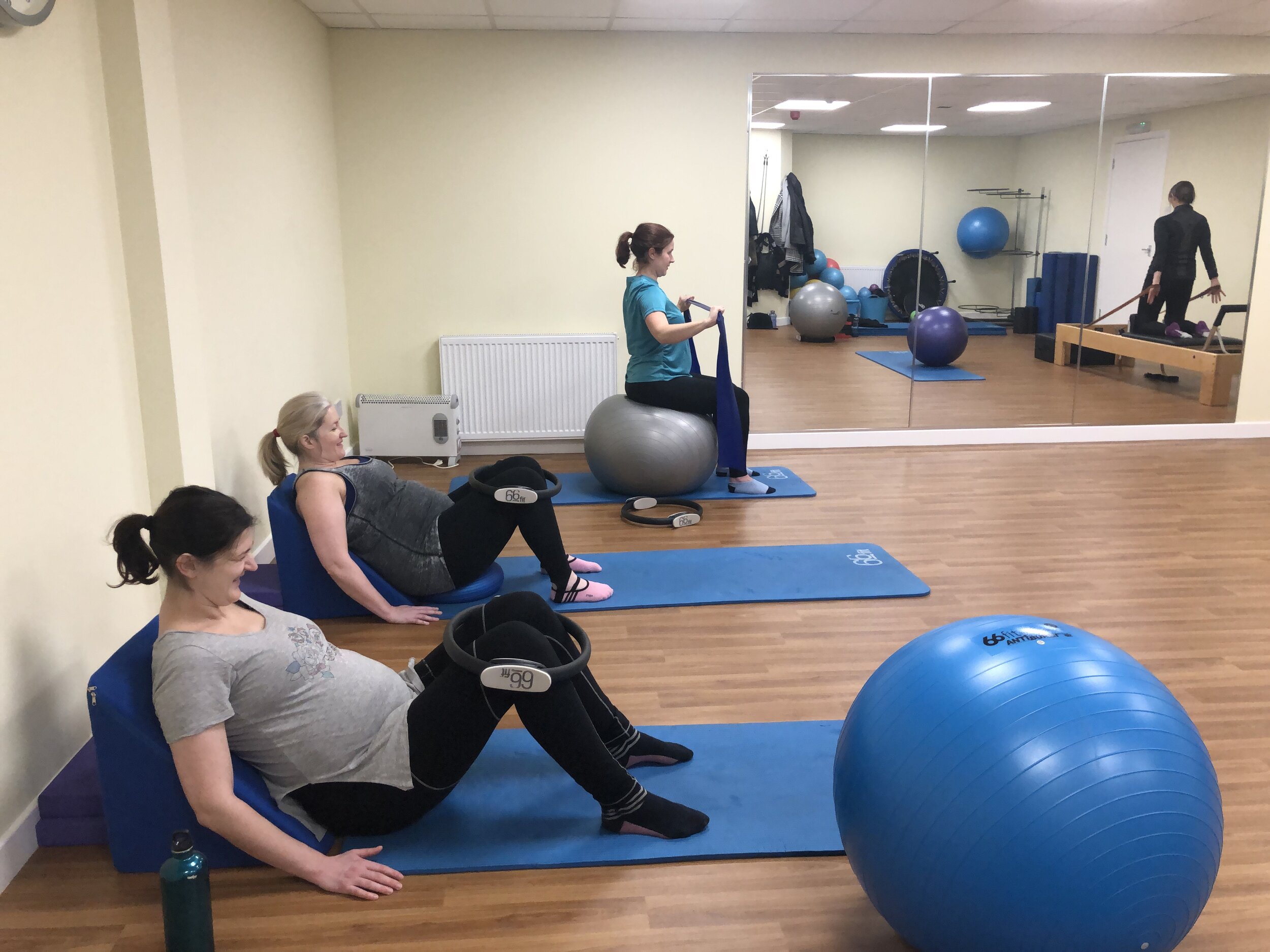
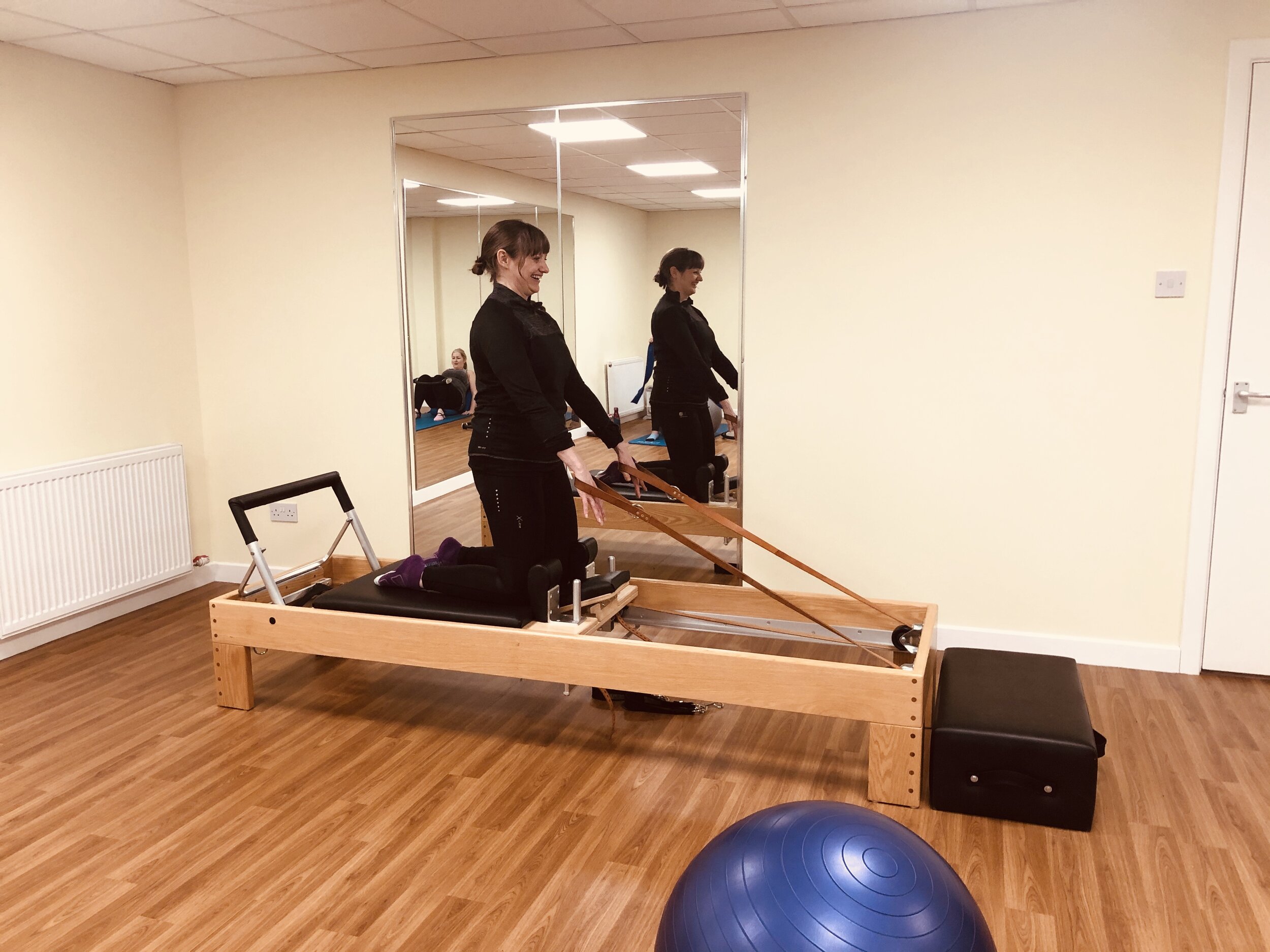
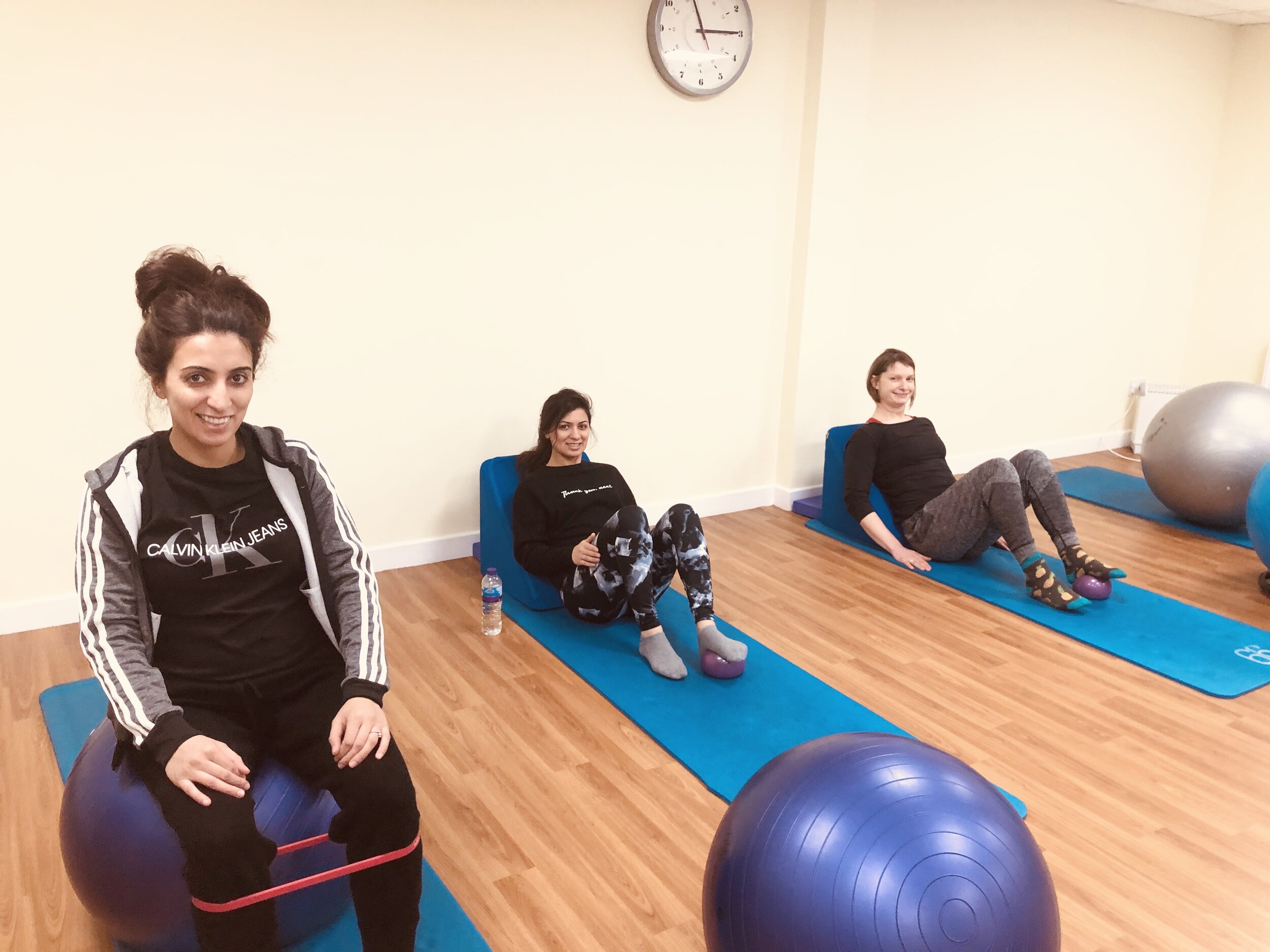
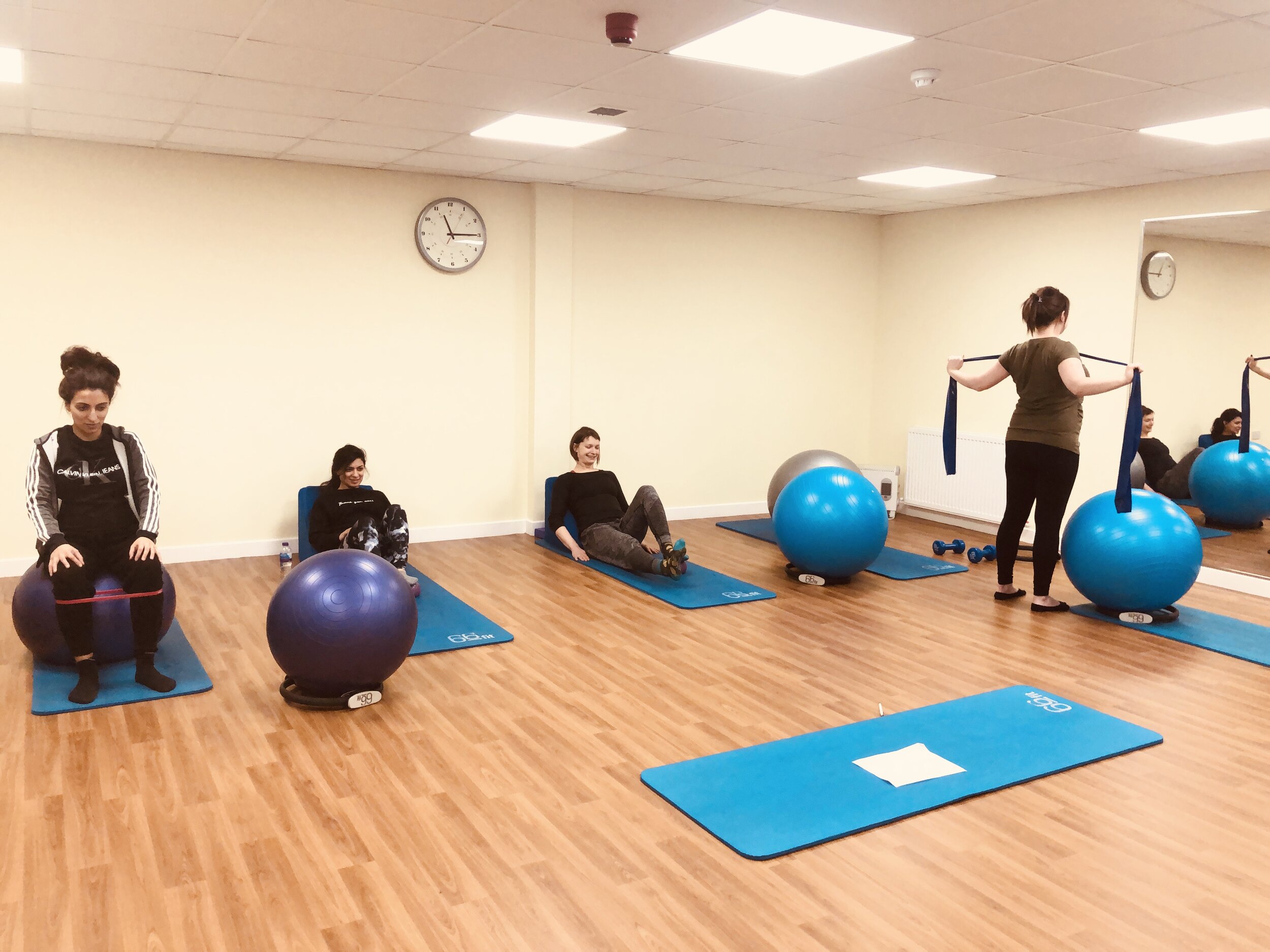
References;
Mottola MF, Davenport MH, Ruchat S, et al
2019 Canadian guideline for physical activity throughout pregnancy
British Journal of Sports Medicine 2018;52:1339-1346
Smith R, Reid H, Matthews A CMO Physical Activity Expert Committee for Physical Activity and Pregnancy, et al
Infographic: physical activity for pregnant women
British Journal of Sports Medicine 2018;52:532-533.
The report states that exercise during pregnancy has been shown to reduce high blood pressure and improve cardiovascular fitness. In addition, it can lower the risk of pregnancy related diabetes and gestational weight gain.
My favourite most recent ante natal exercise paper is “2019 Canadian guideline for physical activity throughout pregnancy”. A group of experts in the field have summarised their recommendations and highlighted the evidence they have to back these up as well as writing a detailed list of who should seek further advice before beginning an exercise program. See this link to read the paper in full.
Below is a summary of their main findings.
‘Strong recommendation’ and have ‘moderate’ quality evidence to support this. (The reason they have said the evidence is ‘moderate’ is because it can be challenging to get enough high quality studies that have enough people in them and are designed robustly to back up their statements.)
All women with normal pregnancies should be active throughout.
At least 150 minutes of moderate level physical activity should be accumulated to achieve these health benefits and reduce pregnancy complications
Accumulating this activity over a minimum of 3 days a week is recommended, however daily activity is encouraged.
Higher evidence and so can be seen as an agreed fact (This is a ‘strong recommendation’ with ‘high’ quality evidence, which is great news for exercising mums to be!):
The types of exercise recommended includes a variety of aerobic and resistance training. Stretching and yoga can also be beneficial.
Common practice however seen as ‘weak recommendations’ as have ‘low-quality’ evidence to back them up:
Women should be taught the correct technique for pelvic floor muscle exercises and carry these out daily to reduce the chance of continence issues.
Women who experience nausea, light-headedness or feel unwell when exercising flat on their back, should modify their exercises to avoid this position.
Antenatal Classes at Physio Effect
Our antenatal class offered at Physio Effect incorporates the above guidelines by contributing to the recommended exercise volume & frequency. Stretching, resistance and pelvic floor exercises are given under guidance by a trained physiotherapist. In addition, exercise position is modified with use of equipment such as a foam wedge and the Pilates reformer. It’s also a great way to meet other mums to be. Please click here for details on booking the class.
Note that we also offer a post-natal program which you can bring your baby along to. This is designed to help restore your body and gently bring to back to the correct level of exercise. Find out more about our CryBaby Pilates classes here.
Our antenatal Pilates class is a bespoke class, individually designed for each person who attends. Clients will be assessed by a physiotherapist who will design and teach the class. For example, the program can help with any musculoskeletal injuries and pregnancy related issues such as pelvic girdle pain. In addition, stage of pregnancy, pelvic floor exercises and safe positions for exercise will be incorporated into this programme.
Case Study: Ankle Sprain Rehab - Part 3
This concludes our 3-part series following Mariam’s ankle rehab programme after a bad sprain two weeks before her first trail marathon and then her first trail ultra-marathon five weeks after that.
Phase 1 (first 2-3 days after injury):
Ice, Elevation, Compression
Crutches
Avoidance of non-steroidal anti-inflammatories (i.e. ibuprofen)
Phase 2:
Non-weight-bearing exercises
Training modification
Progression to weight-bearing and single leg exercises
Phase 3:
Training modification
Running technique modification
Progression to plyometrics and impact loading
Case Study: Ankle Sprain Rehab - Part 2
Part 2 of our ankle rehab case-study following Mariam's injury two weeks before a trail marathon.
Part 2 of our ankle rehab case-study following Mariam's injury two weeks before a trail marathon. This is a sports physiotherapy approach to the treatment and management of an injury leading up to a specific event. In this episode, we looked at progressing her exercises and training modification leading up to the run.
Case Study: Ankle Sprain Rehab: Part 1
We all know injuries happen and, in most unfortunate instances, they can happen before a sporting event you have been training for months. It can be disheartening when you’ve spent countless hours training for such an event with the prospect of having to pull out. In this month’s case study, we will be looking at managing an ankle injury coming from a personal experience from one of our own physios, Mariam. We will be demonstrating a sports physiotherapist’s approach to dealing with an injury leading up to an event over a 3-part series. Part 1 is below:
New Mummy Struggles: Exercise after Pregnancy
How one of our Physios managed getting back to fitness alongside the challenges of a new baby!
After giving birth to my first baby five months ago, life had changed as I knew it. Sleep deprivation… endless feeds… nappy changes… How does exercise fit into the picture?
I had always been a fit and active person, exercising 4-5x a week and continued to exercise right up until four days before my daughter was born. Before I knew it, I had this tiny human completely dependent on me. I felt like there was no time for anything else. Not long after I gave birth, we attended a family wedding. A family member commented that I had put on weight since having a baby and decided it was appropriate to tell me to stop eating junkfood. It was at this point I knew I had two choices: 1. Wallow in self-pity and never leave the house again 2. Find the motivation to do the things I enjoyed before having my baby. I chose the latter.
Since giving birth, I knew my body was no longer the same. I realised this after I came home from hospital and a 10-minute walk around the park felt like a marathon. As a physiotherapist who works with a lot of ante- and postnatal women, I am lucky to have the background knowledge on the human body after birth. I knew I couldn’t just jump back into what I was previously doing pre-baby. It was going to take time and patience. For the first six weeks, my exercise consisted of pelvic floor and abdominal exercises shown to me in hospital. This was all well and good when you are advised to do them every few hours, but when you’re dealing with a brand new baby; it’s the last thing on your mind! I therefore incorporated these exercises with a task I was doing constantly throughout the day - and that was feeding my baby (which was every 2-3 hours!) Every time I sat down to feed her, I made myself do them. I also went on daily walks with the buggy, which helped my mental wellbeing just to get outside the house.
After my 6-week check-up, I saw a physiotherapist who assessed my pelvic floor function and measured my belly for a diastasis recti; a condition that happens during pregnancy when the abdominal wall separates. This causes a small gap above or below the belly button. To address this, I attended mother and baby Pilates classes. Pilates focuses on the working relationships of the muscles around your trunk. These include your abdominals, diaphragm, pelvic floor and back muscles – ideal after having a baby! Being able to bring my baby along to the classes also made it easier for me not having to worry about a babysitter.
At 12-weeks, I felt I was ready to begin higher intensity exercise. After we put the baby to bed at night, I would go for a light jog for 15-20 minutes and gradually increased this as I felt comfortable. Thankfully having a baby in the spring meant long daylight hours for me to head out. I also joined a mother and baby bootcamp-style class, which incorporated strength and resistance exercises as well as high intensity interval training.
Common post-pregnancy myths that need to be debunked:
It’s normal to wee myself a little bit sometimes because I’ve had a baby
False: Incontinence post-birth is a sign of pelvic floor dysfunction and could indicate a prolapse. It is important to get this assessed by a women’s health physiotherapist to avoid long-term problems.
It’s normal to have back or pelvic pain because I’ve just had a baby
False: You may be in pain because of muscle imbalances and weaknesses. Seek advice from your physiotherapist for treatment and exercises to address any issues.
I’ve had a C-section so I don’t need to strengthen my pelvic floor
False: Your pelvic floor, regardless of how you gave birth, has been through a lot! It has carried the weight of your baby, the placenta and a 50% increase in blood volume for 9 months. This will greatly affect its ability to do its job properly compared to pre-pregnancy function.
Doing lots of ab-crunches and “planks” will help me get a flat tummy
False: These types of exercises should not be performed early on after birth as they cause excessive force on the abdominal wall, which may actually increase separation. It is best to strengthen the deeper abdominal muscles first with Pilates-type exercises.
It is important to remember that every woman is different. Exercise timescales are determined by your previous level of fitness, the type of birth you experienced and take into account any complications thereafter. Seek advice from your physiotherapist before commencing an exercise regime.
At Physio Effect we provide physiotherapy throughout your pregnancy journey and beyond. This includes ante- and postnatal assessment, treatment and physio-led Pilates classes. Our partners at Everyday Athlete Gym also run special mother and baby exercise classes.
Click here to see more about our ante- and postnatal services here at Physio Effect
One of our physios Mariam Kilpatrick with wonder-baby Aria
Back Strengthening Exercises for Desk-Based Workers
Let one of our Physios, Danny Wray, take you through a set of exercises which will help to strengthen your back and hips and that help counteract the negative effects of sitting.
At Physio Effect we routinely treat the general population for injuries and pain which can be attributed to a sedentary lifestyle. We have previously discussed the risks posed by excessive hours of sitting and how this is reaching almost epidemic levels in the Western world. Today's article provides some general exercise recommendations that can go some way to reducing this risk and counteracting the negative effects of sitting.
In an ideal world, those of us who have sedentary or sitting based occupations should aim to move, stretch, and be active for at least 1-2 minutes of every hour. While some of the exercises shown here may not be suitable for your particular work environment, any effort to perform a routine of this nature for 5-10 minutes before or after work or during a lunch break would go a long way to reducing the risk of pain and injury. General exercise and safe varied movement of any kind is also highly recommended.
Exercise 1 - Thoracic Rotation
Thoracic Rotation Start
Start on all fours with one hand placed behind your head.
Slowly turn the elbow towards the ceiling allowing your trunk to rotate and stretch
Hold at top position for 3-5 seconds. Repeat x 10 with each arm
Thoracic Rotation Finish
Exercise 2 - Dart
Dart - Start Position
Lay face down with thin pillow or folded towel for head support
Arms by your side, gently stretch your fingertips away from your shoulders allowing your shoulder blades to glide downward and slightly inward
Palms facing your hips, have your arms floating just off your side and not touching the floor
Keeping the back of your neck long and eyes looking to the floor, gently lift your head and upper body just off the floor - imagine lifting from your breast bone
Hold the finish position 3-5 seconds. Repeat 10 times 1-2 sets
Dart - Finish Position
Dart - Finish - Detail
Exercise 3 - Hip Flexor Stretch
Hip Flexor Stretch Start Position
Take a kneeling / lunge position as shown - use support of wall or furniture for balance if required
On the kneeling side gently engage your buttock and lower abdominal muscles - imagine you are tucking your tailbone in between your legs
You should feel a stretch at the front of your hip/ thigh. If balance allows gently raise the arm on the same side as the kneeling knee.
Hold the stretch for 30 seconds minimum and repeat 2-3 times each side.
Hip Flexor Stretch Finish Position
Exercise 4 - Cobra
Cobra Start Position
Lay face down with hands palms down about shoulder height
Using your arms slowly press out peeling your upper body slowly off the floor
Remain heavy in your hips trying to keep them in contact with the floor - relax your buttock muscles
Hold the finish position for 5-10 seconds, return to the start and repeat 5-10 times
Cobra Finish Position
Exercise 5 - Shoulder Bridge
Shoulder Bridge Start Position
Lay flat on your back with feet shoulder width apart and knees bent
Using your lower abdominals gently tilt your pelvis to press your lower back flat to the floor
Pressing through your heels, using your buttock and abdominal muscles gently peel your spine up from the floor starting with your tail bone.
Finish with your weight resting across your shoulder blades and your shoulders, hips and knees in a diagonal line
Hold finish position for 3-5 seconds, return to start and repeat 10 times for 2-3 sets.
Shoulder Bridge Finish Position
Exercise 6 - Superman
Superman Start Position
Start in all fours position with knees under hips, hands under shoulders and spine relaxed
Slowly extend out opposite arm and leg pointing the toes behind and the fingertips to the front
Keep gentle tension in your lower abdominals - think about drawing your bellybutton in towards your spine
Try to maintain spinal position throughout the movement, return slowly to start position
Repeat with opposite arm and leg, try 10-12 repetitions for 2-3 sets.
Superman Finish Position
Exercise 7 - Thoracic Extension with Foam Roller
Thoracic Extension with Foam Roller Start Position
Lying on your back with knees bent and feet flat, place a foam roller under your mid-upper back as shown
Take a deep breath in and then, as you exhale, slowly extend back over the roller to stretch your back. Try to keep your lower abdominals engaged to avoid over-arching your lower back
Support your head with your hands and be careful to stay relaxed in your neck. If you find this too intense or uncomfortable, try using a pillow or pillows to rest back onto
Hold the finish position for 2-3 breath cycles, return to start position and repeat 5 times
Move the roller to another position in your mid-upper back and repeat the process, aim to work on 3-5 positions along your spine
Thoracic Extension with Foam Roller Finish Position
Thoracic Extension with Foam Roller Alternate Finish Position
Exercise 8 - Pec Stretch
Pec Stretch Start Position
Stand as shown with arm at approximately shoulder height and palm to forearm placed against the doorframe
Slowly turn your body away by stepping your feet around to open and stretch the front of your chest and shoulder
Lean gently into the stretch, keeping your neck relaxed, hold for 30 seconds+, repeat x 2 on each side
Alternatively, use a doorway to position both arms in the stretch position, step forward to feel the chest and shoulder open and stretch. Hold 30 seconds+, repeat x 2.
Double Pec Stretch Position
While these are general exercise recommendations suitable for the majority of the population they are not prescriptive for any specific pain or injury. These exercises should be performed slowly and gently in a range of movement suited to your own level of ability and flexibility. The exercises should not cause any pain and we recommend that if you are in any doubt or if you are suffering from spinal or joint pain issues you should consult a healthcare professional for advice.
At Physio Effect we provide a wide range of services allowing us to not only treat your pain or injury but ensure that you are given the best advice specific to your individual needs to prevent your problem from recurring.
Crybaby Classes: Post-Natal Pilates Classes at Physio Effect!
Our Post-Natal Pilates class is designed for new mums from 6 weeks post-partum (8-weeks if by C-section) and onwards. The class is designed to help heal and strengthen muscles affected after pregnancy and labour such as your pelvic floor and abdominals.
Our Post-Natal Pilates class is designed for new mums from 6 weeks post-partum (8-weeks if by C-section) and onwards. The class is designed to help heal and strengthen muscles affected after pregnancy and labour such as your pelvic floor and abdominals. This class can also help manage back pain, pelvic girdle pain, improve continence and treat abdominal separation (diastasis recti). The added bonus is you are welcome to bring your baby along to the class while you exercise.
How do I get started?
For first-timers, you will be required to have a post-natal 1:1 assessment with one of our physiotherapists. This can be booked after you’ve had your 6 week check-up from your physician and given the all-clear to start exercising (usually a little longer if you've had a C-section). During this consultation, you will be able to discuss your pregnancy, labour and set some goals you’d like to achieve after having your baby. The physiotherapist will assess your pelvic floor and abdominal function and go over some basic, fundamental Pilates exercises in preparation to starting the classes. This appointment usually takes 30 minutes and you are welcome to bring your baby along.
When are the classes?
The classes are every Tuesday and Wednesday and run over a 6-week or a 12-week block. Each class lasts an hour. If you would like to start the classes in the middle of a current block, there is an option to pay per class depending on available spaces. The class number is small with a maximum number of 8 mums per class. Please get in touch to find out when the next block is.
How much does it cost?
Physiotherapy post-natal Assessment (if you are attending for the first time): £30
6-week block: £60
12-week block: £110
If you would like to pay per class, for example, if you cannot attend all classes in the block or if you are joining in the middle of an existing block, it would cost £12 per class depending on available spaces (we take a maximum of 8 mums per class).
Up until what age can I bring my baby?
You are welcome to bring your baby up until they are able to crawl/move about (which can be different for every baby, of course!). Otherwise you may find it difficult to do your Pilates exercises.
Are your facilities buggy friendly?
Our Pilates studio is located within the EDA Gym which has ramps for easy buggy access. The studio has ample space for your buggy and there is a lounge area and café where you can buy water/coffee/tea and snacks.
What other Ante- and Post-Natal Services do you provide at Physio Effect?
Here at Physio Effect, we have a number of therapists specially trained to help you through your pregnancy journey and after you've had your baby. Click here for more info on our other services
“Fantastic Pilates class that has helped me regain confidence, strength and my figure after having my son. Mariam is very skilled and knows exactly how to fine tune the exercises to suit individual needs. It is a particular bonus that you can take your baby along and Mariam is on hand to lend a cuddle if one of them is unhappy. There is also a cafe onsite where the group enjoy a coffee and a natter after the class. I would not hesitate to recommend”
We got a new piece of kit in our Studio!
Watch Nicki demonstrating our new Pilates Reformer in our Northside Studio!
We are very excited to get a reformer for our studio here at our Northside Clinic in Port Dundas - read more about the reformer here and see Nicki, one of our Massage Therapists demoing it below!
What is the difference between ‘Regular’ and ‘Clinical’ Pilates?
Interested in Pilates in general but not sure what we mean by Clinical Pilates?
Regular Pilates is conducted by a Pilates instructor, whereas Clinical Pilates is prescribed and supervised by a Physiotherapist. The difference is very important because a physiotherapist has an in-depth knowledge of injury, pathology, body function and movement patterns. The physiotherapist will assess each person and determine which exercises will be the most effective for each individual. This becomes especially important if you have a history of injury such as low back pain, whiplash, hypermobility or an athlete coming back from an injury. There will be certain exercises which need to be adapted specifically for you.
For more information on our Clinical Pilates classes here at Physio Effect, have a look on our Clinical Pilates page




